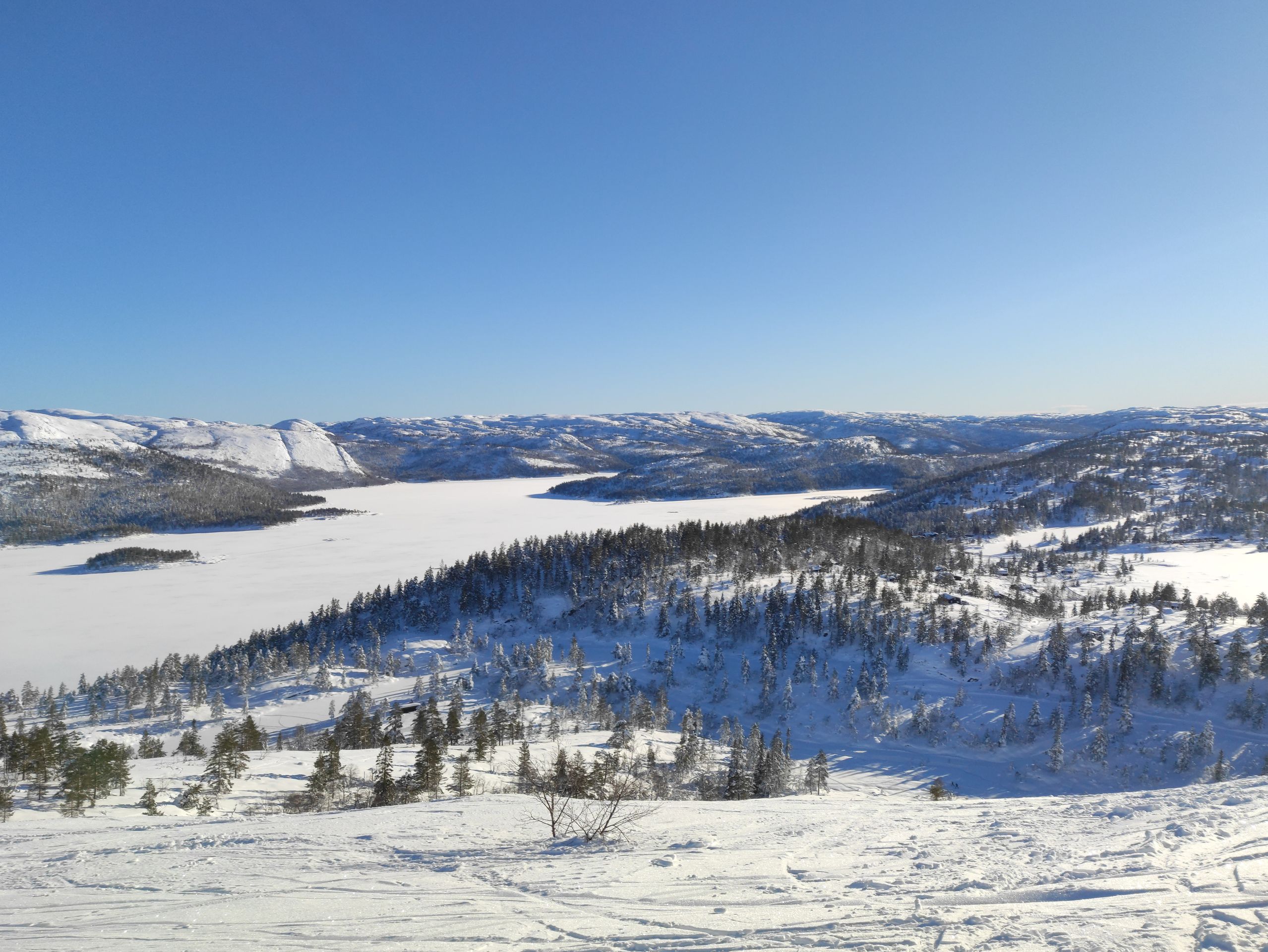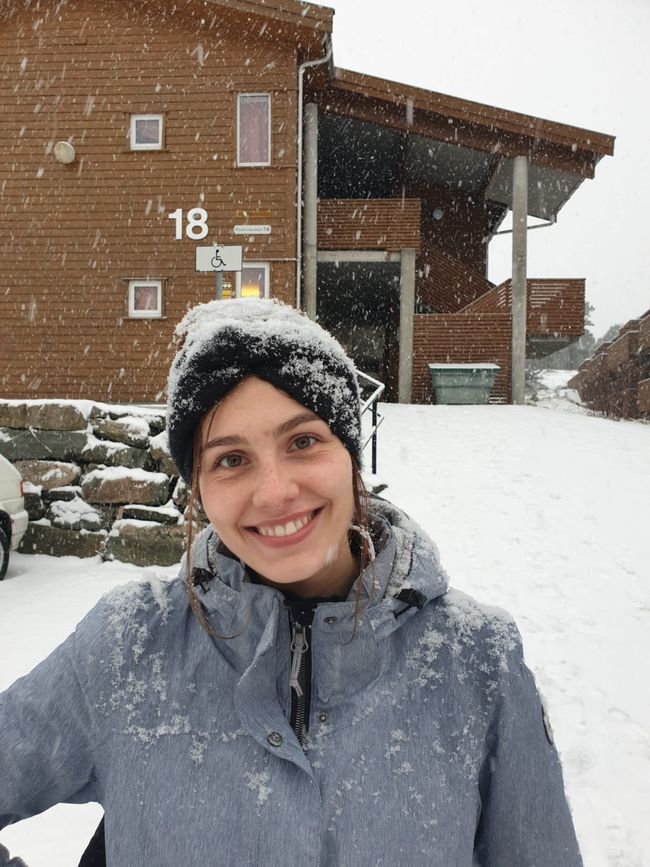Coastal course on Randøya: kayaking, motorboating, rowboating, fishing & biology
Wotae: 09.06.2021
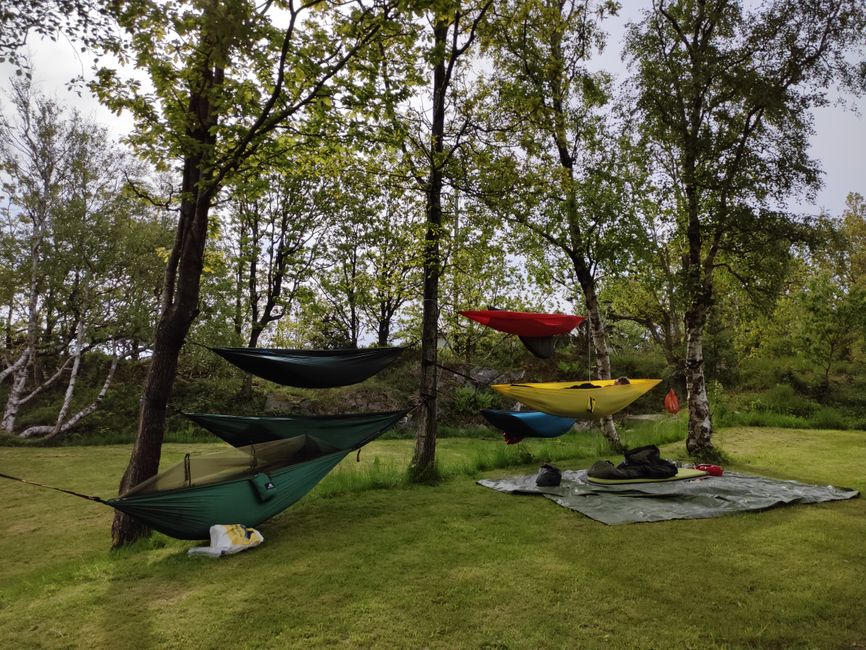
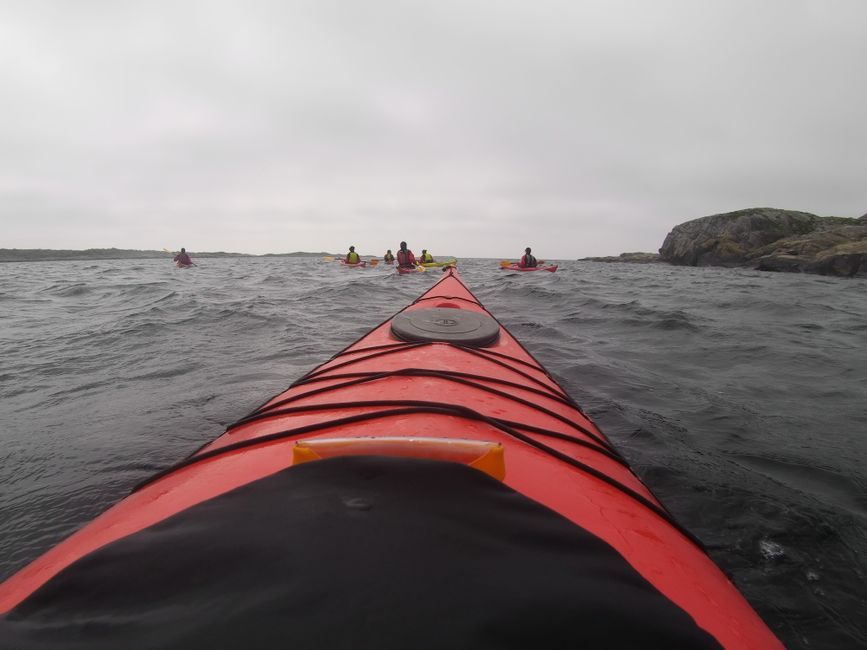
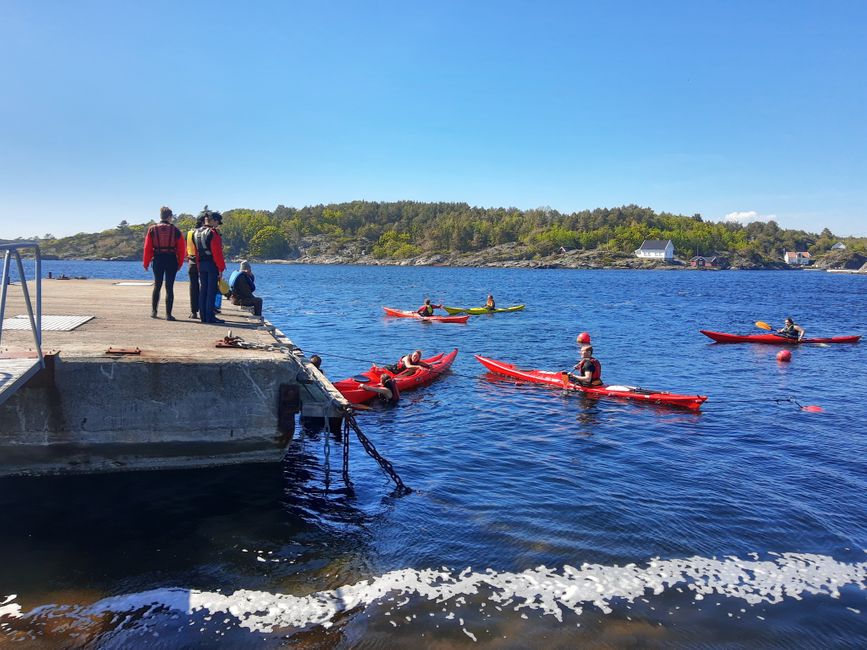
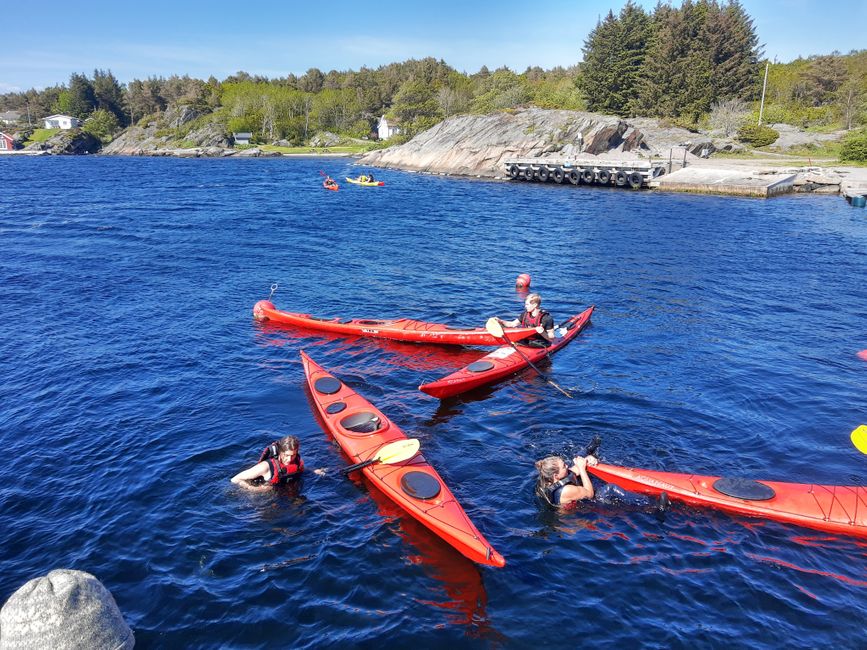
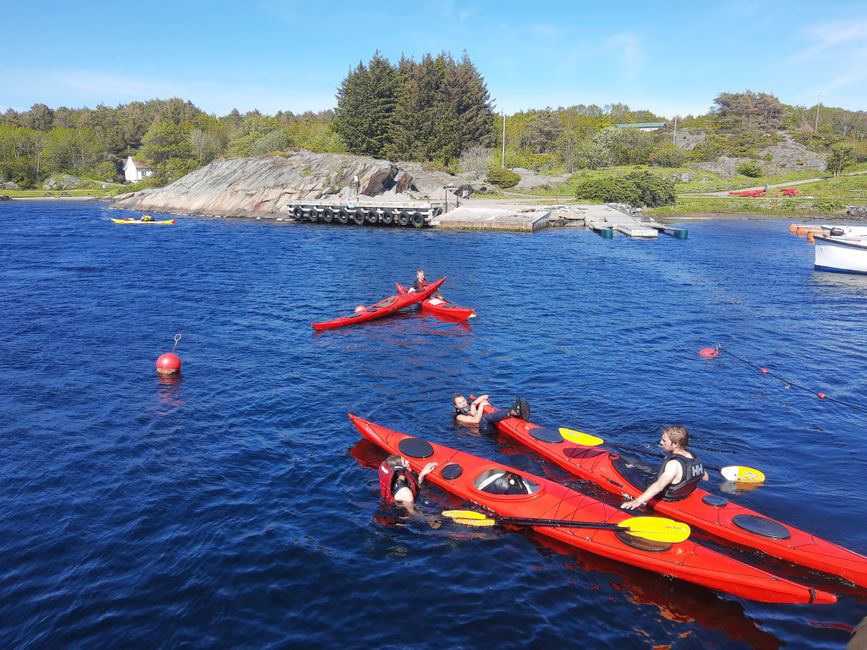
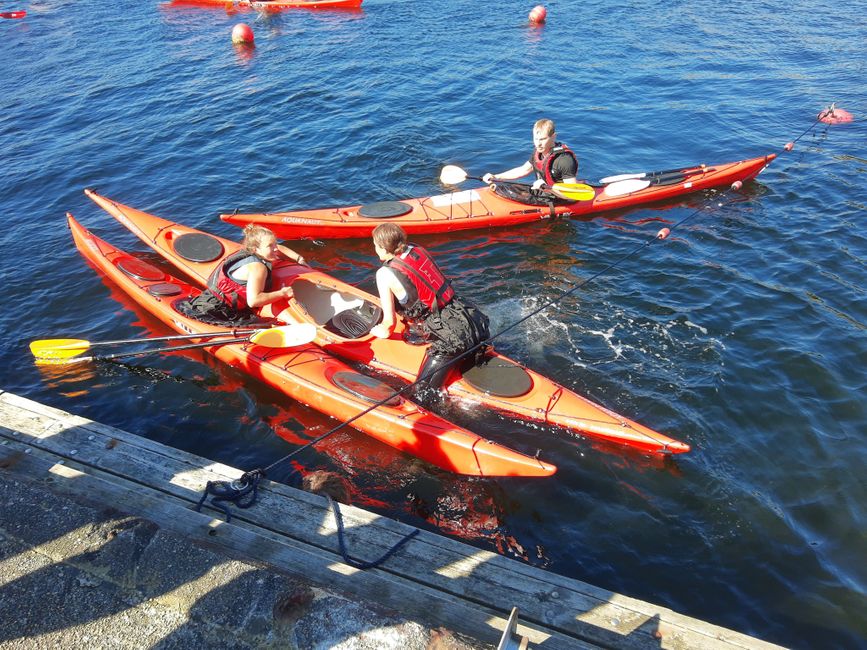
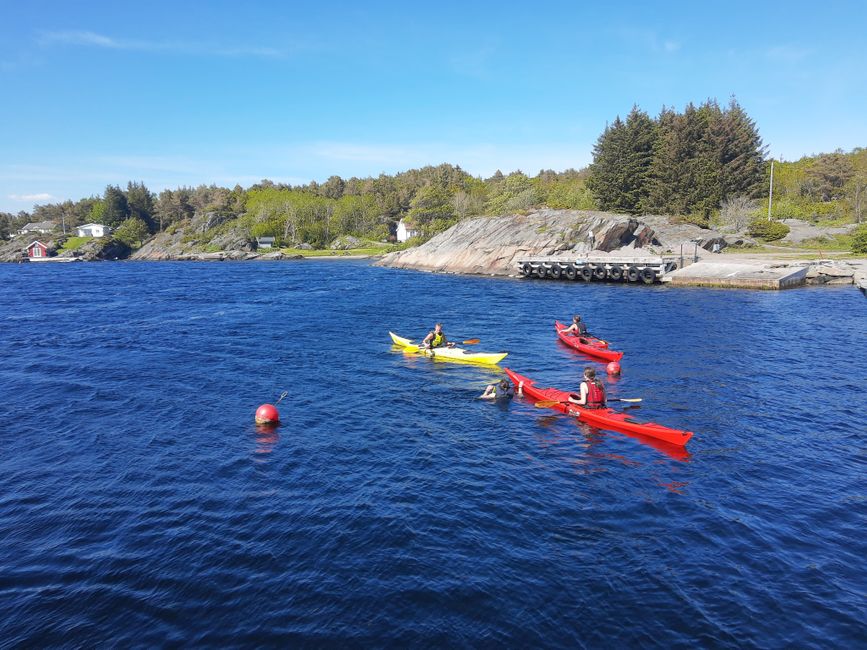
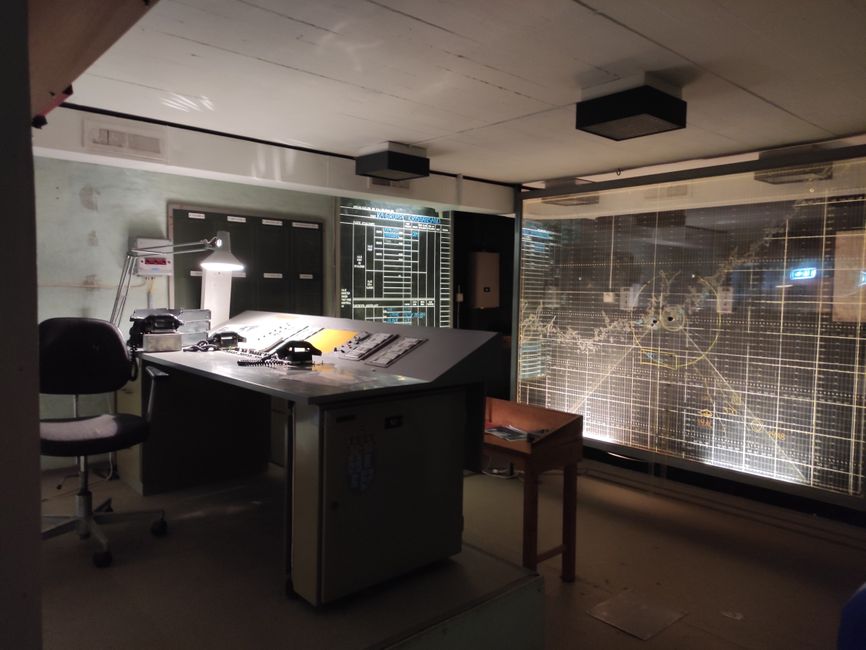
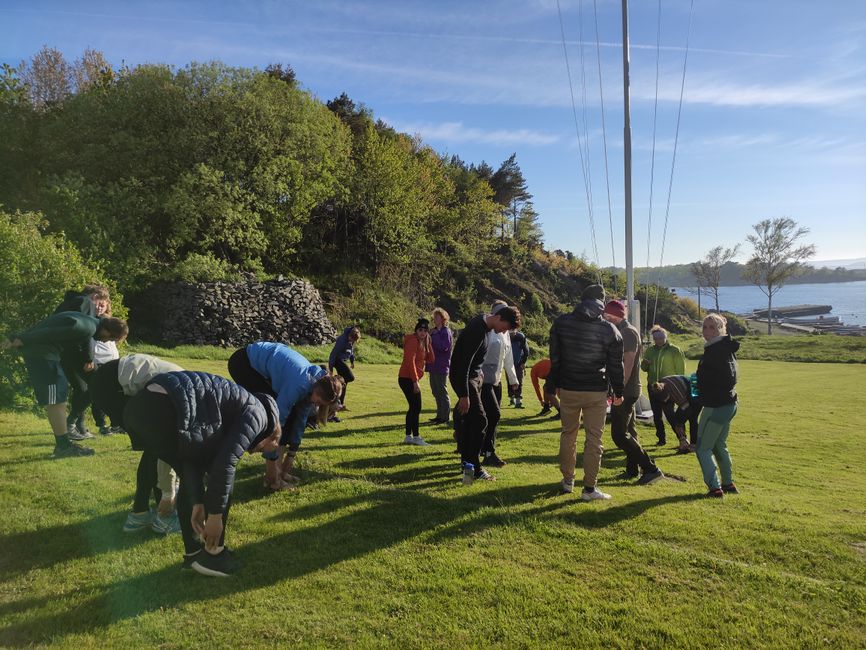
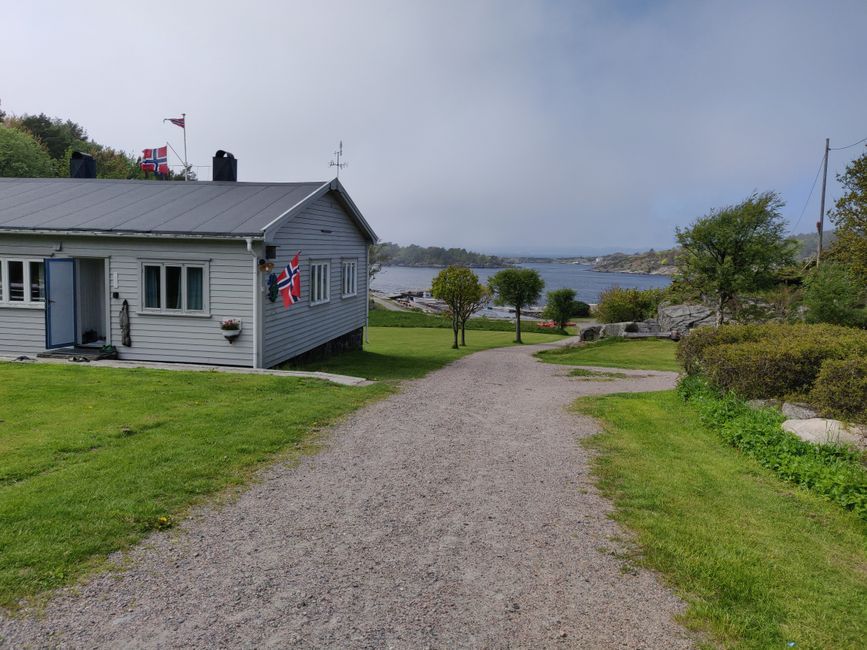
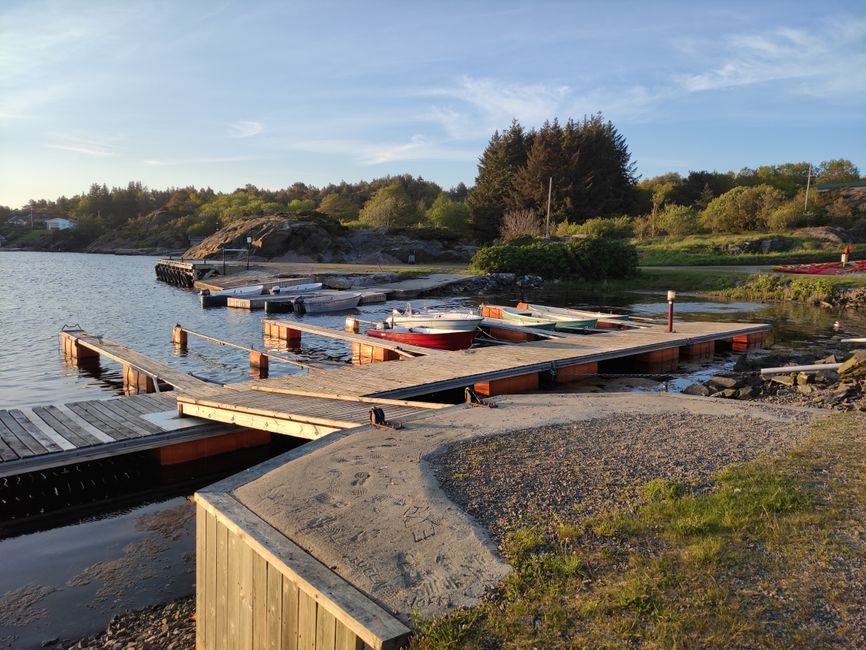
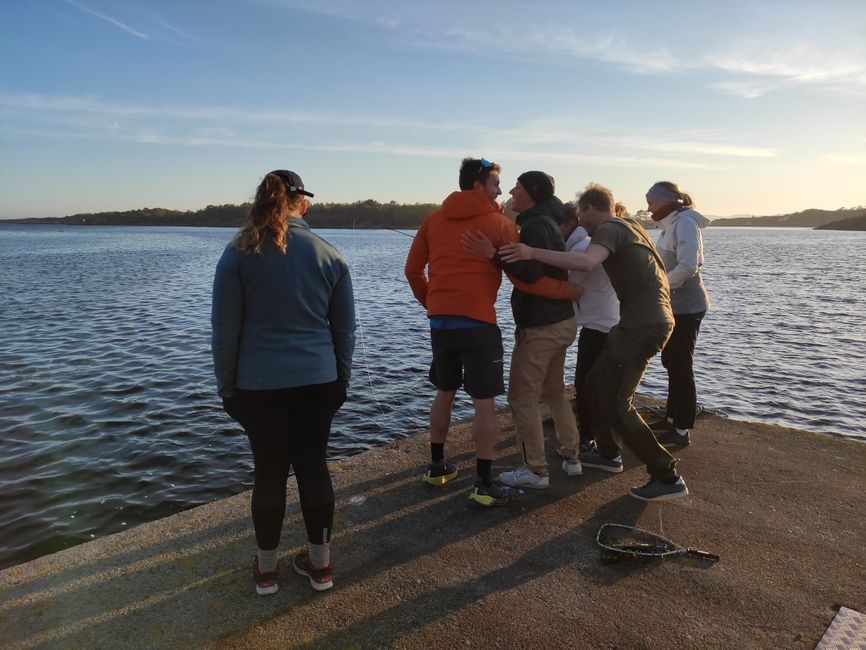
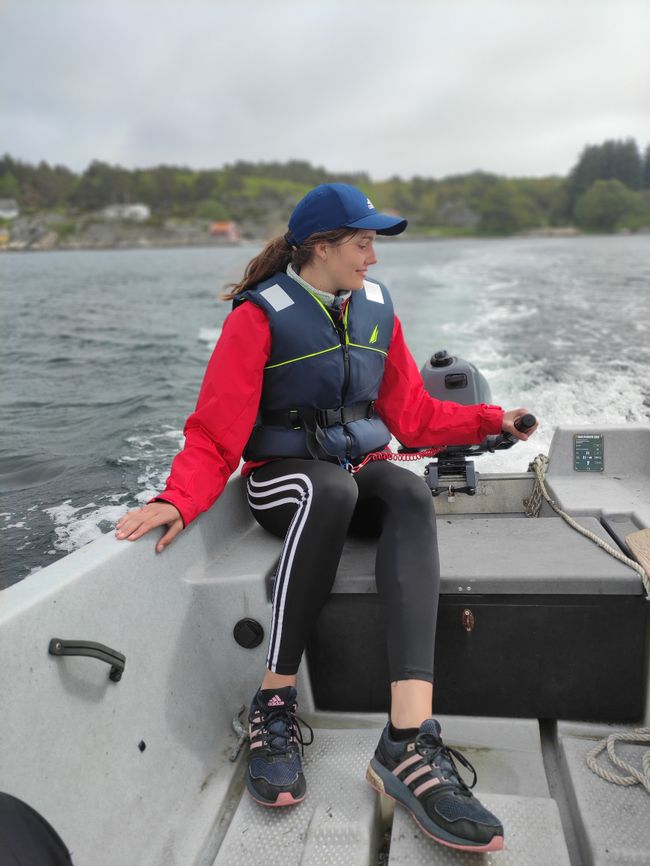
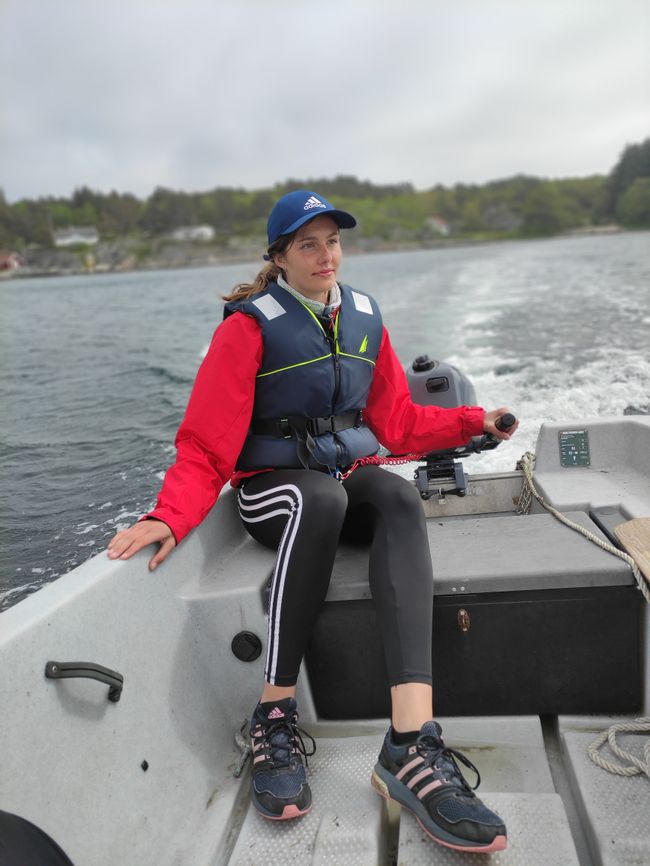
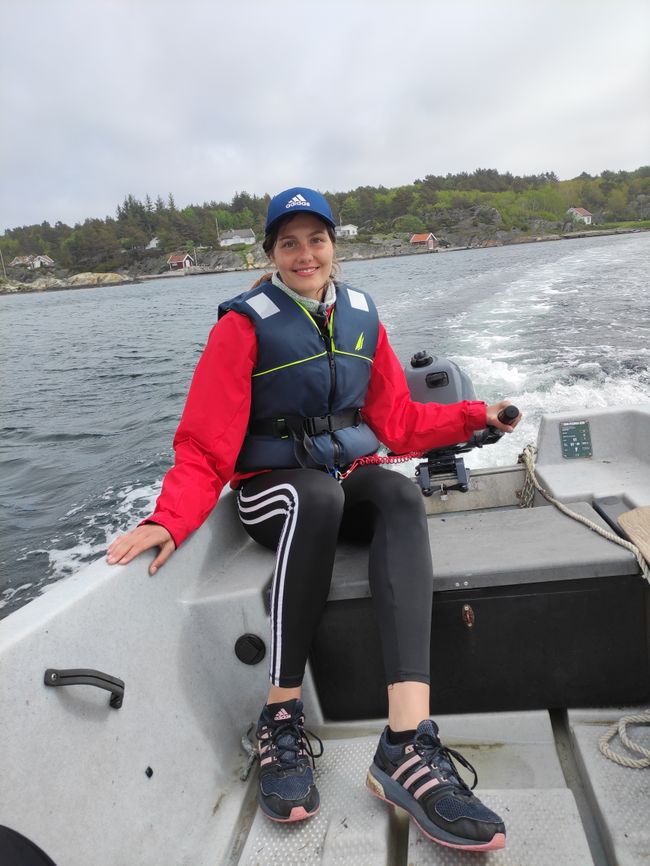
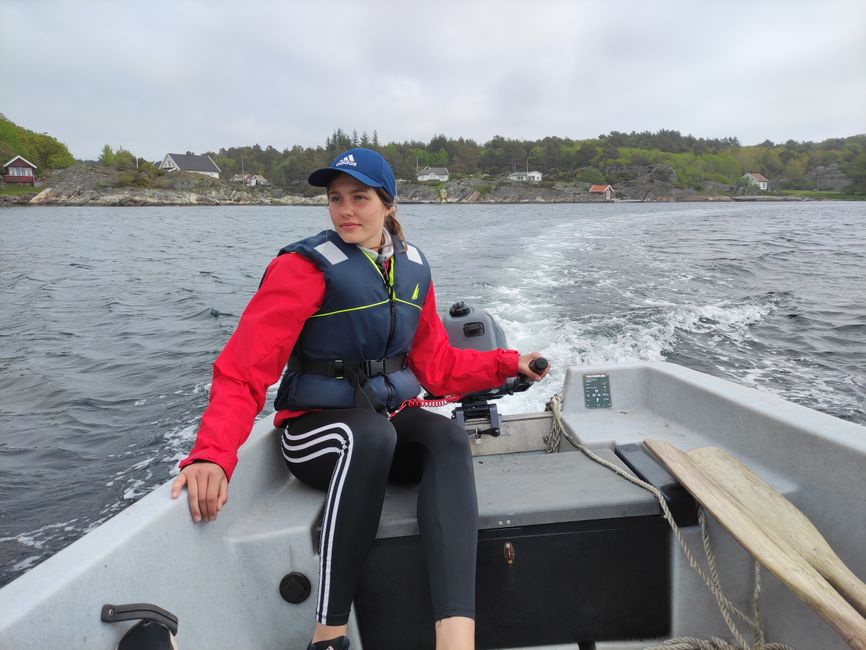
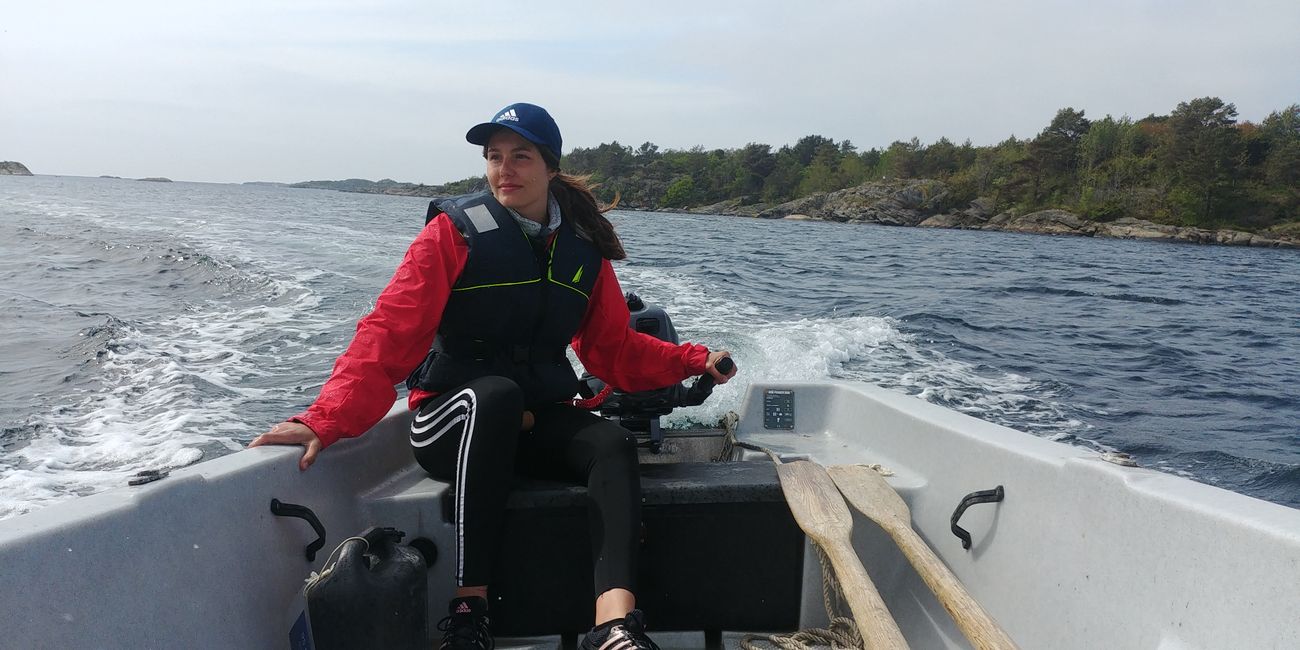
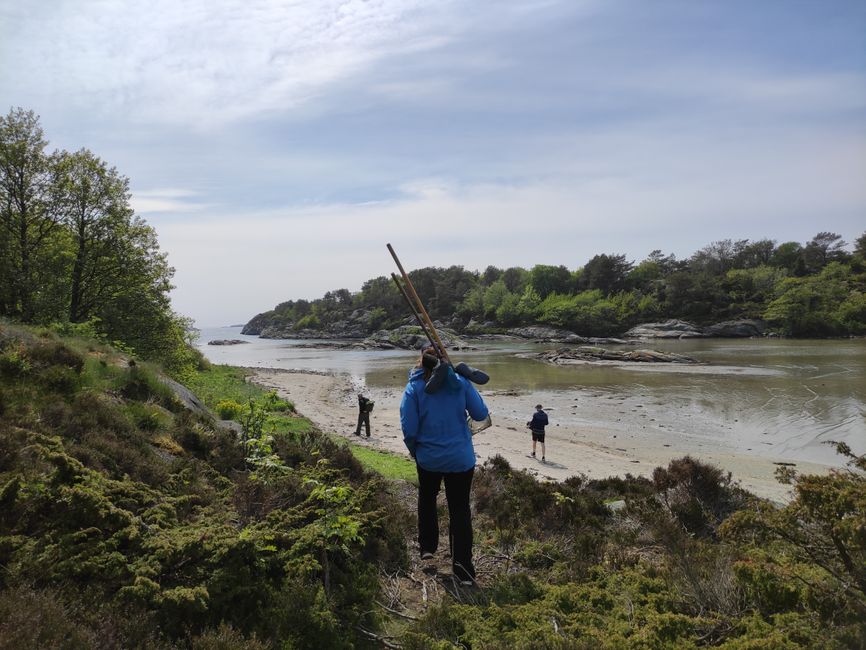
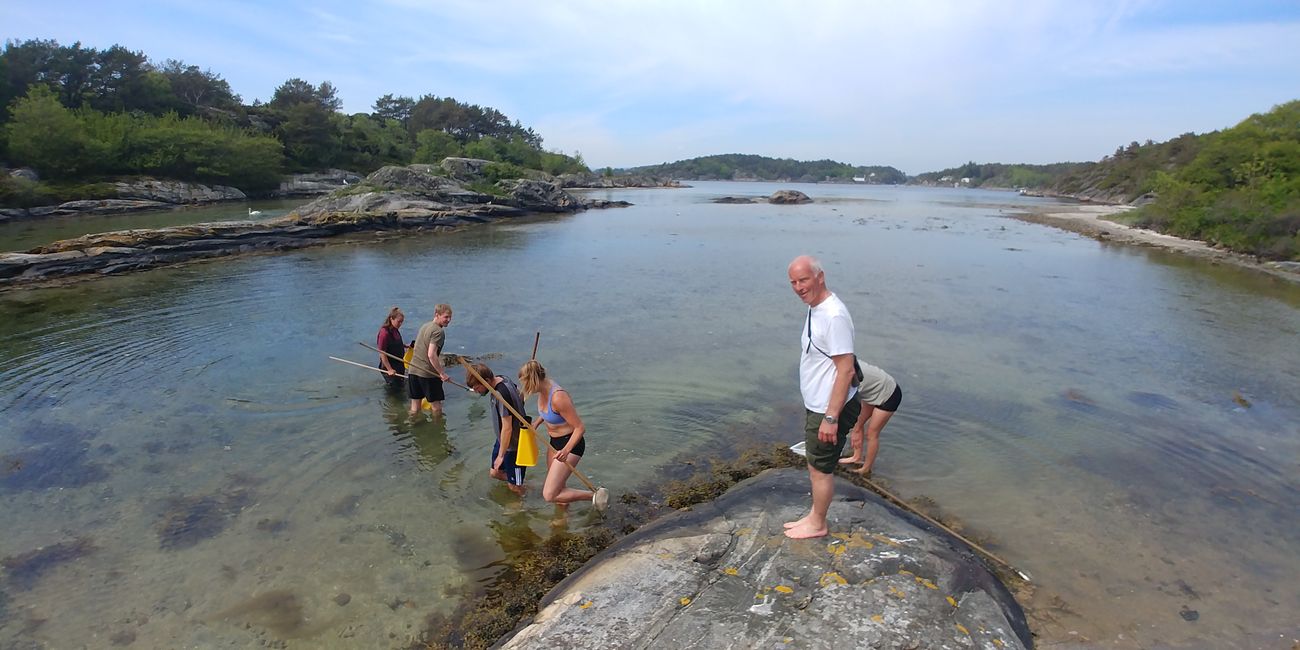
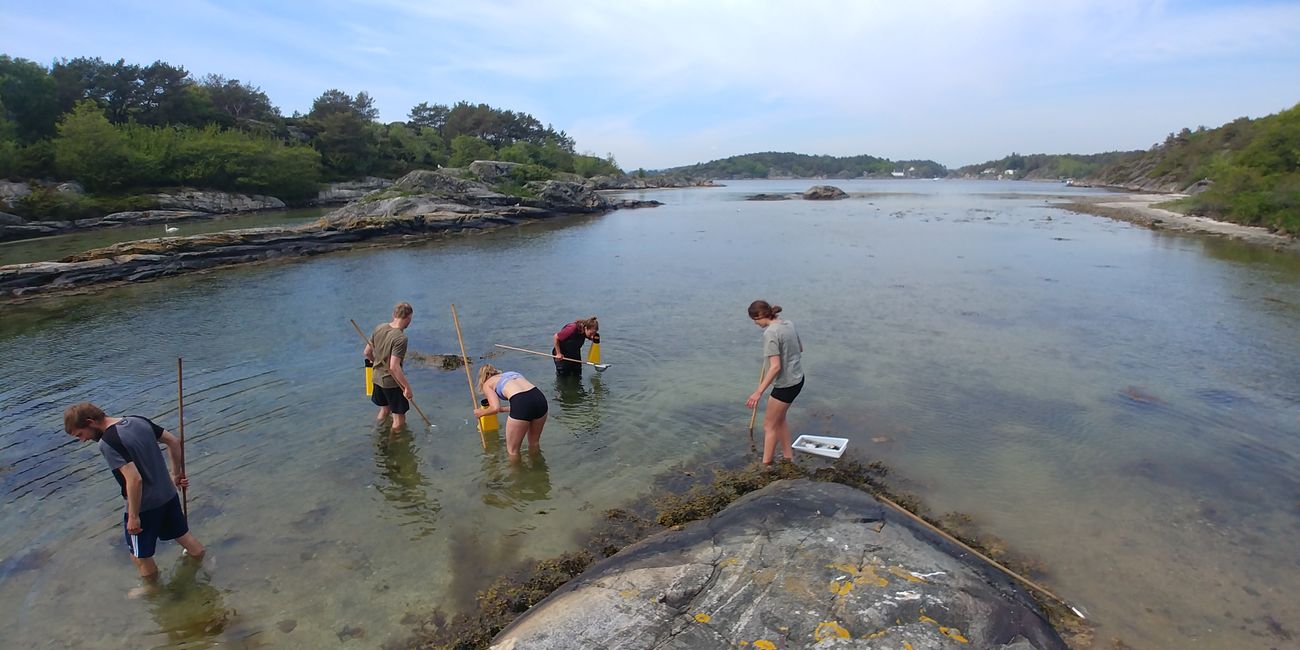
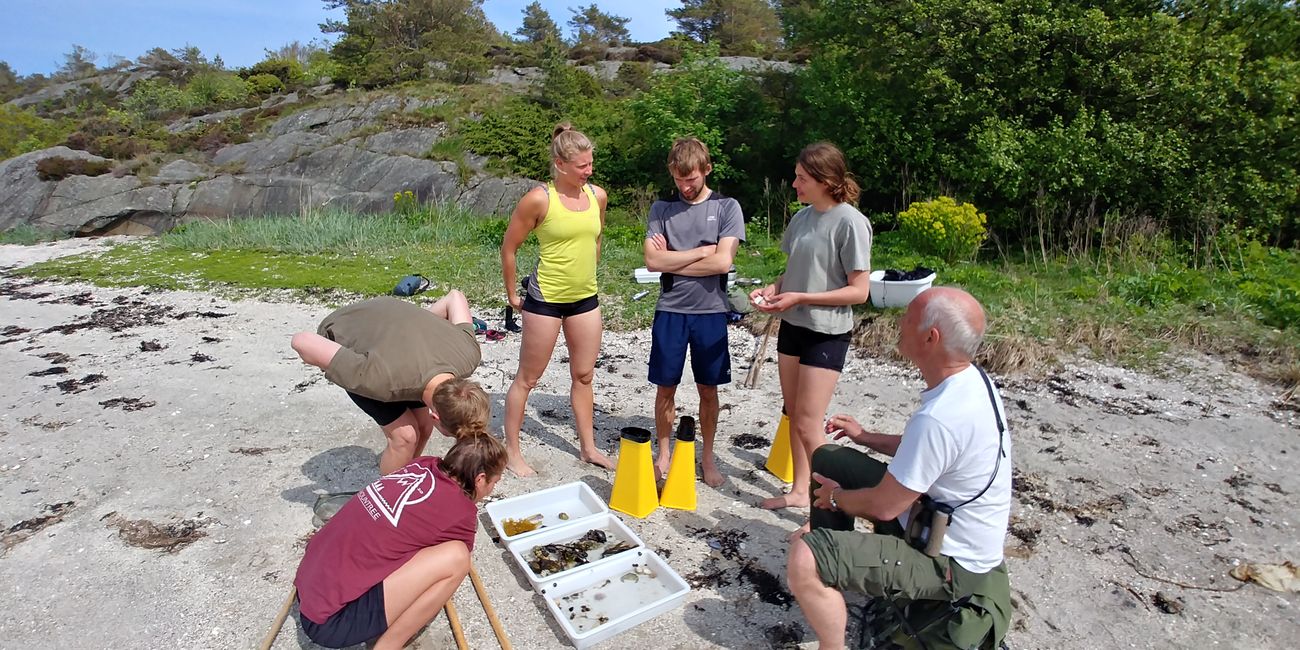
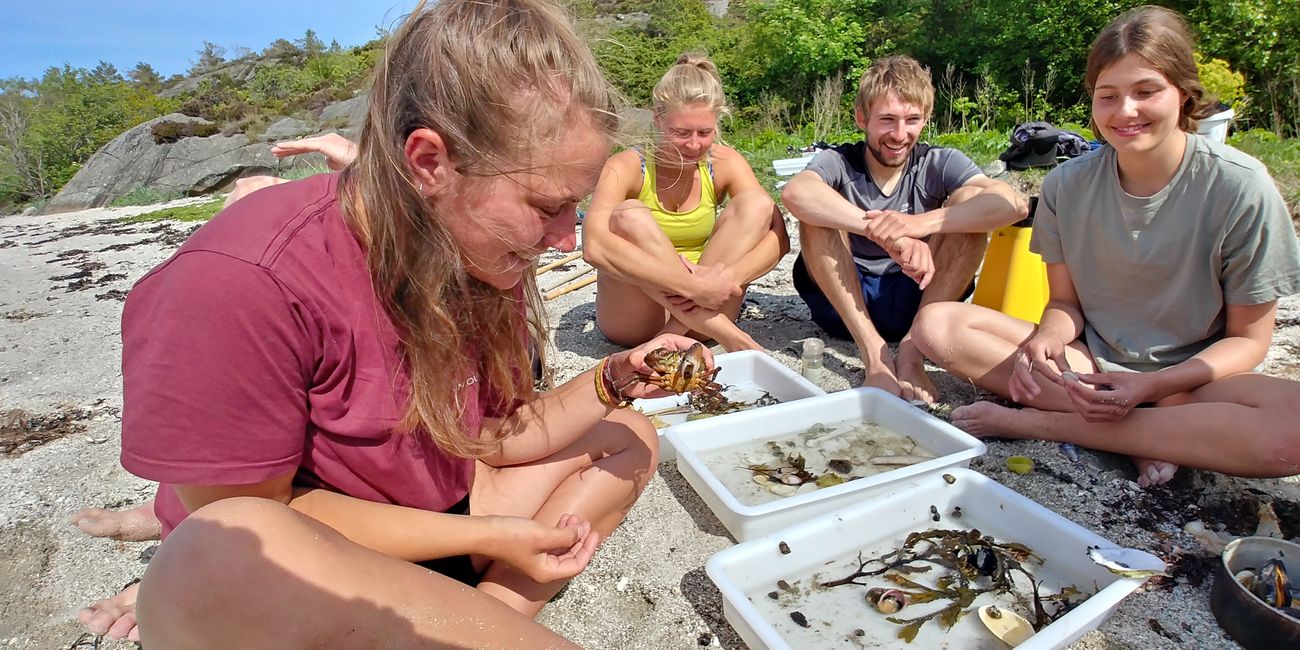
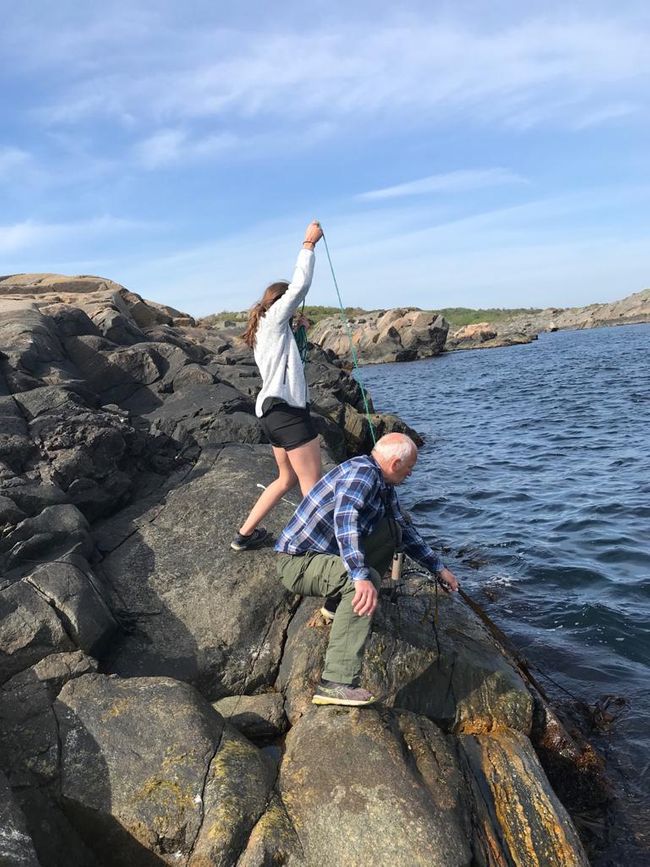
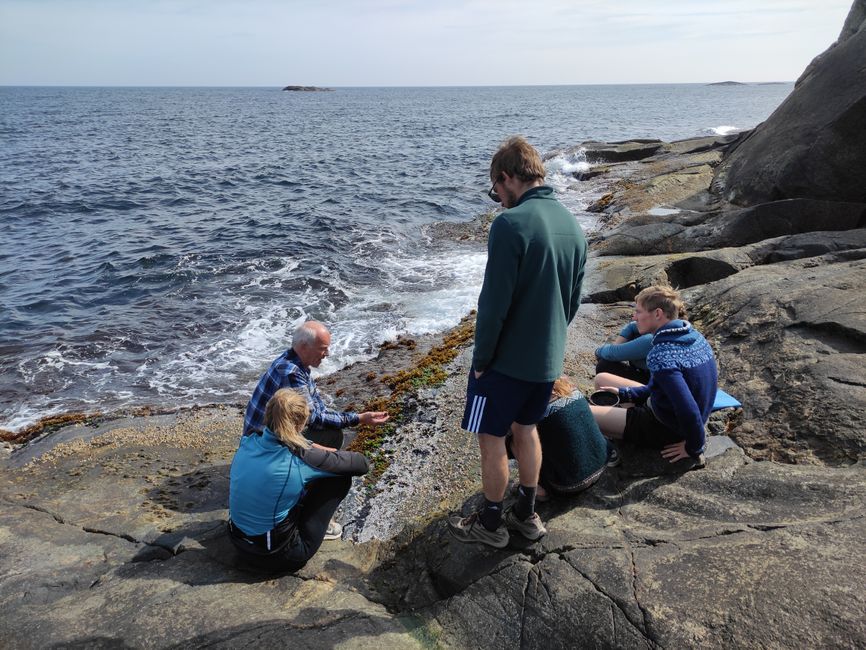
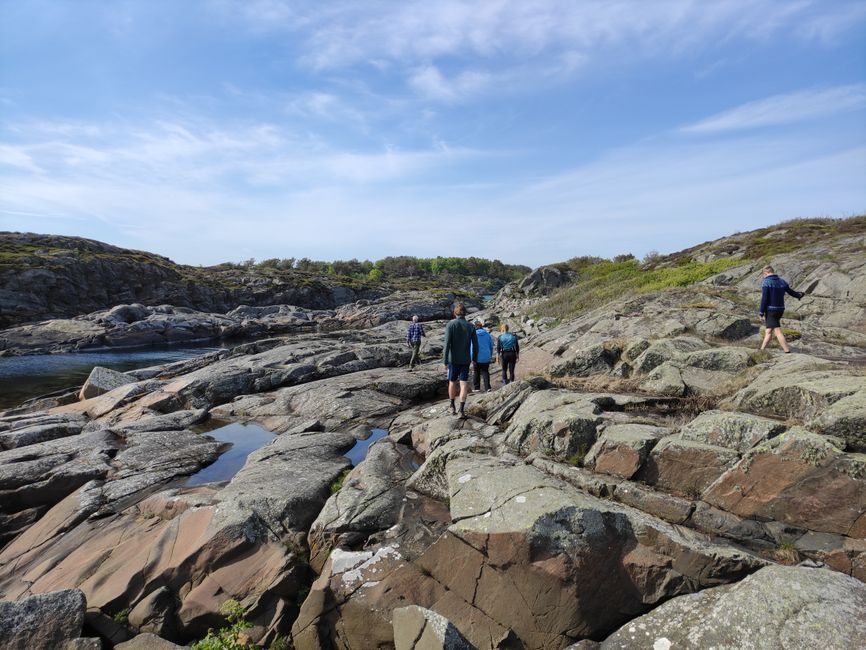
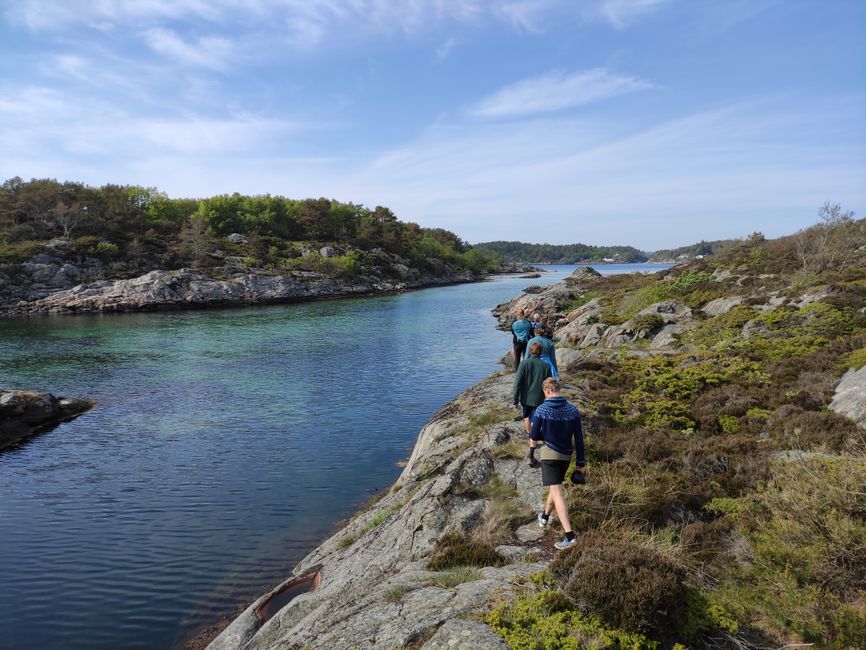
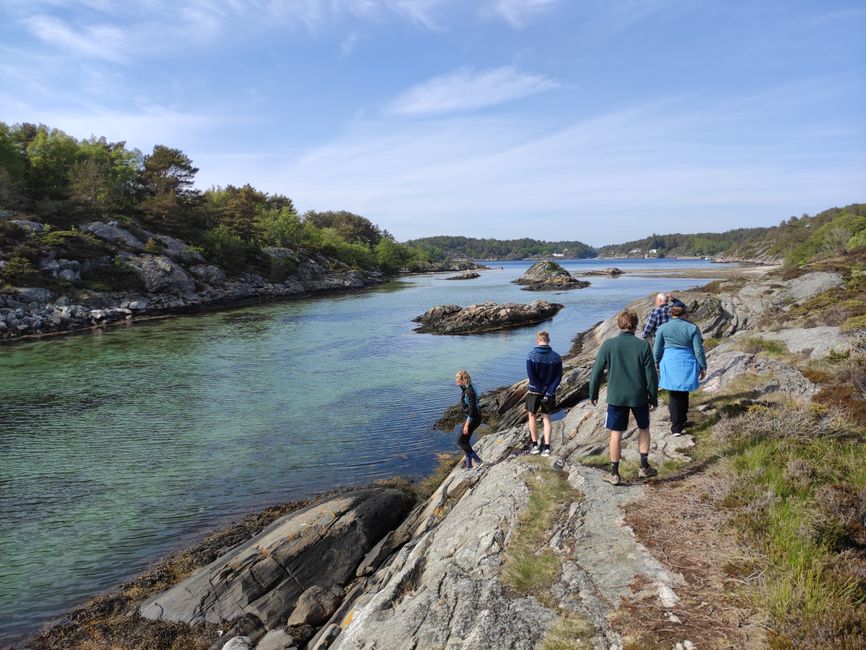
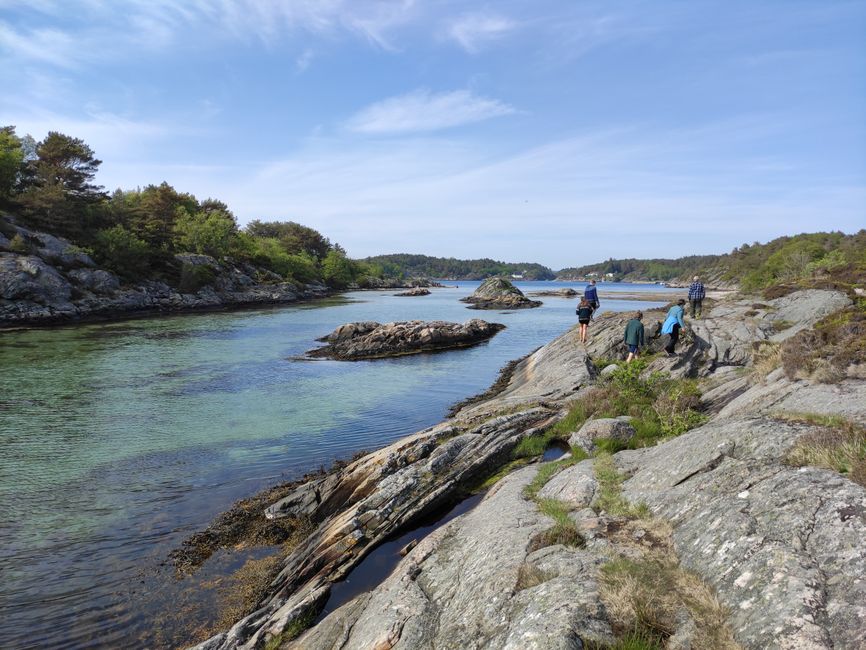
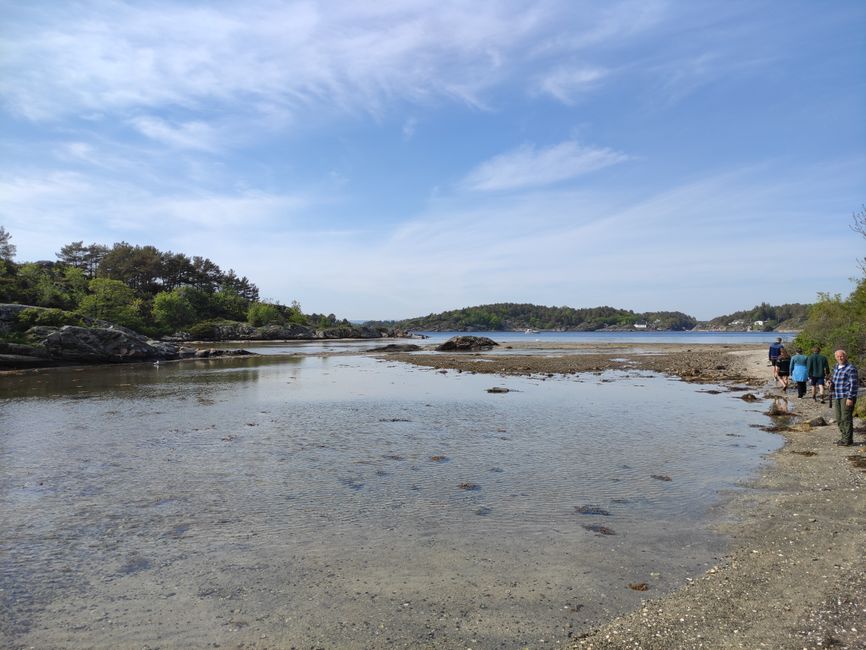
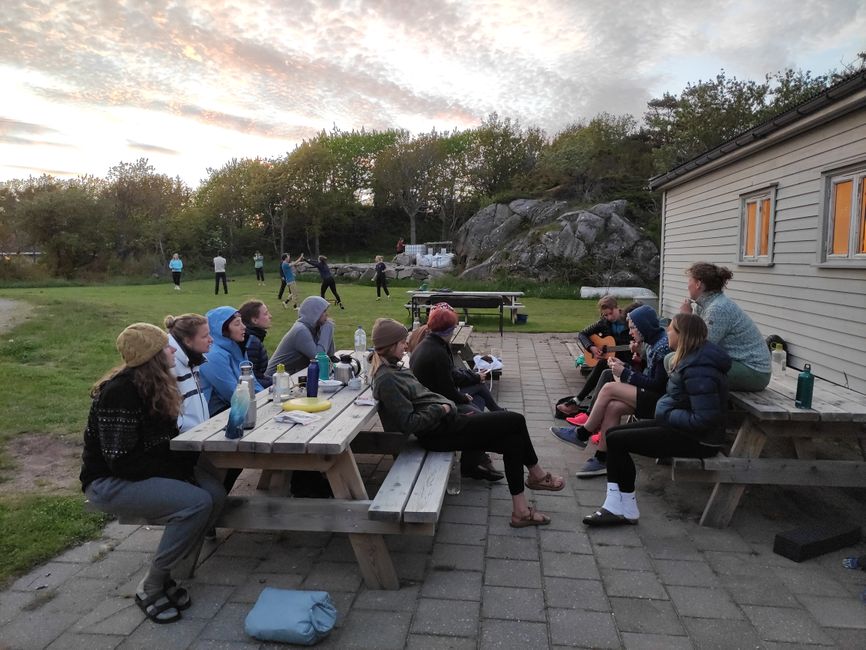
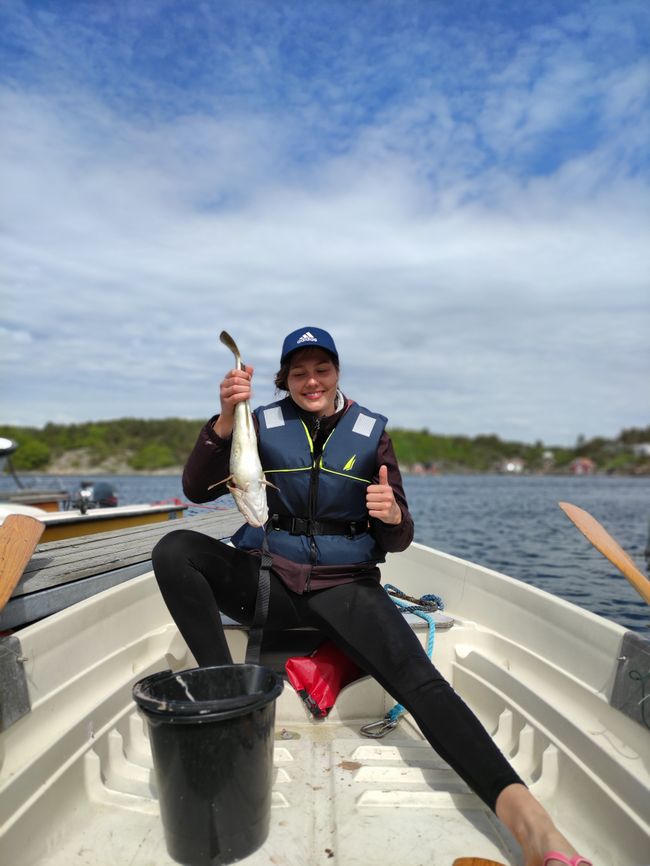
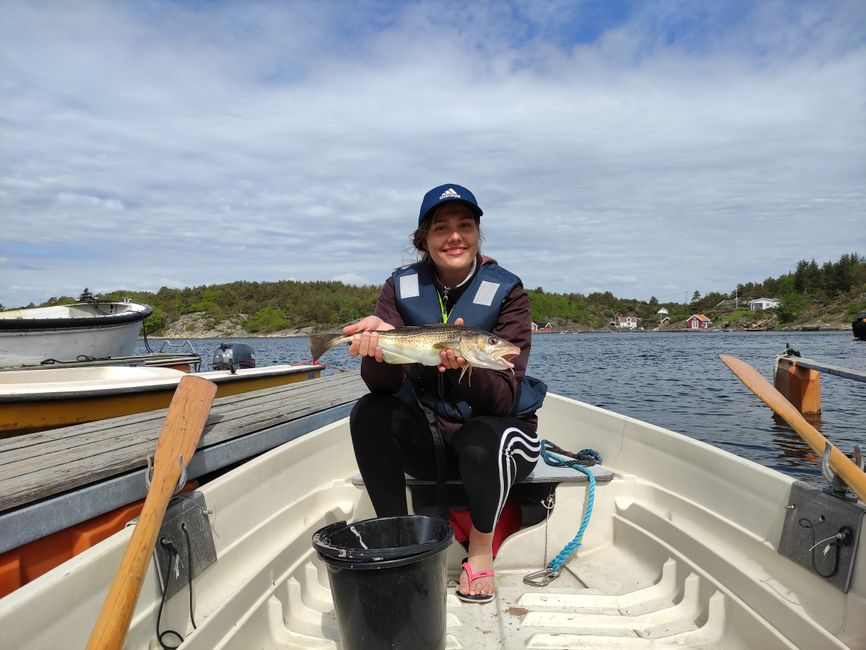
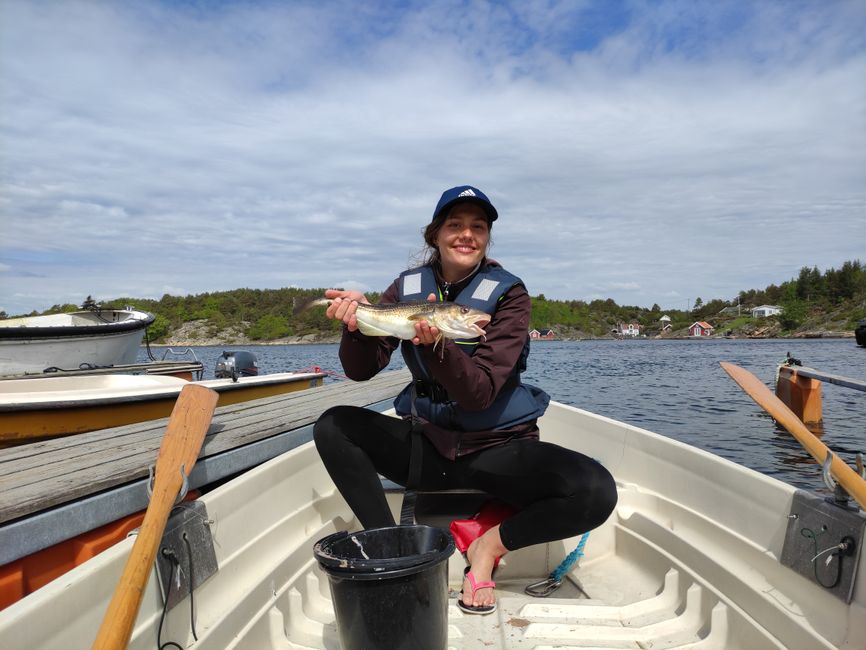
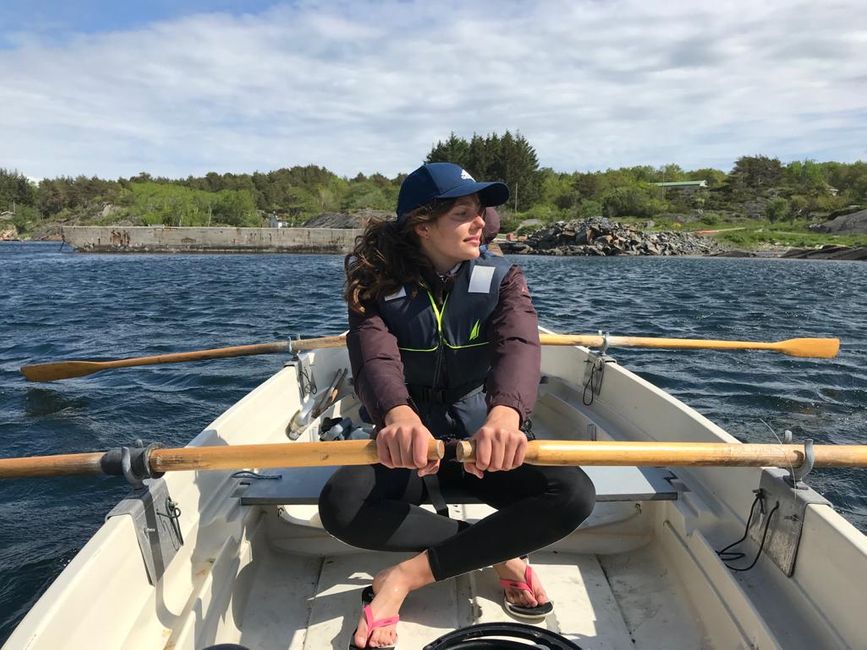
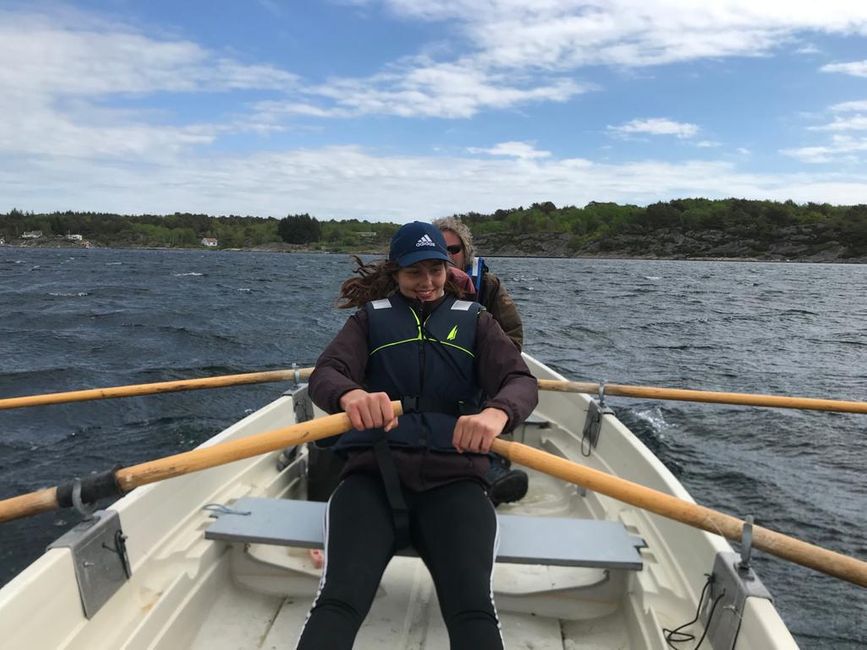
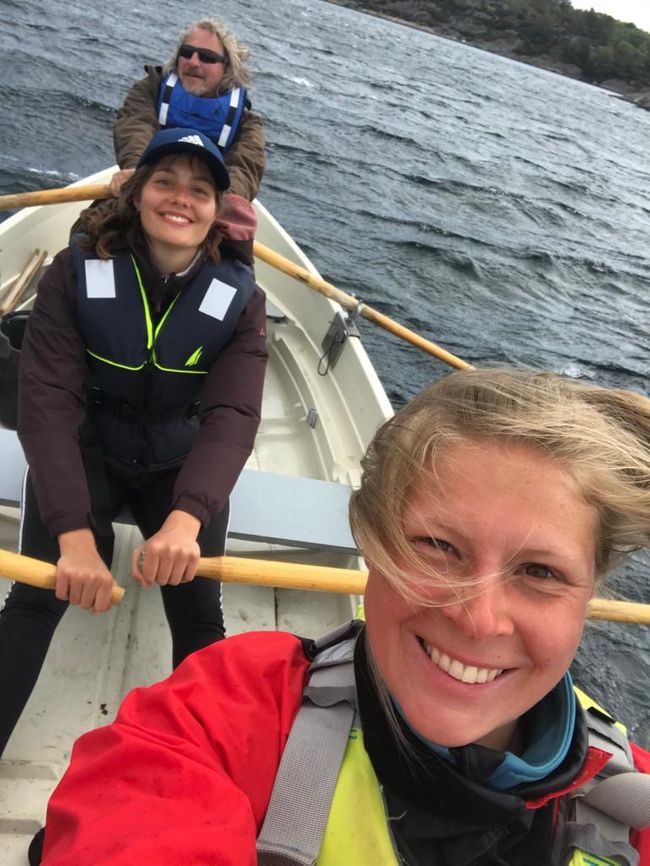
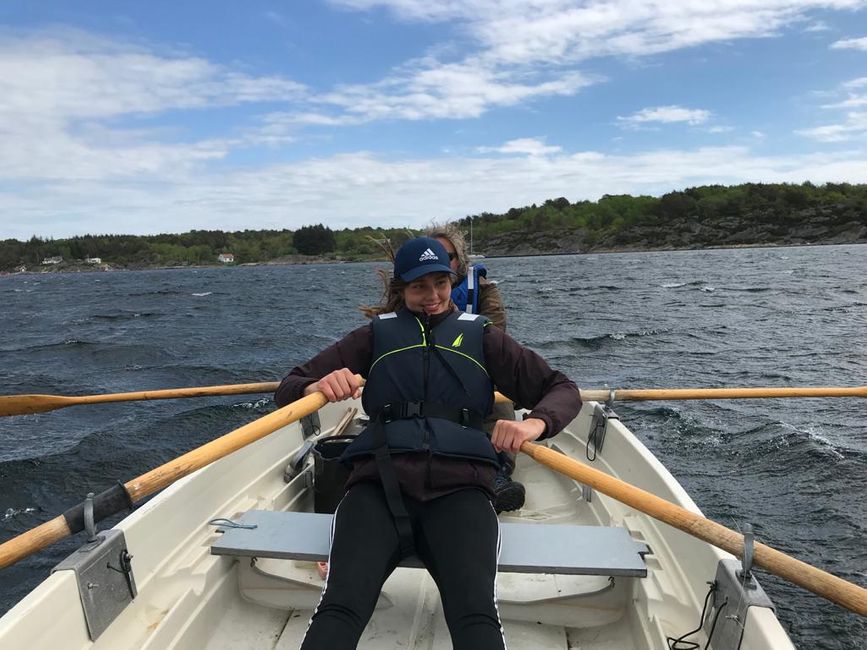
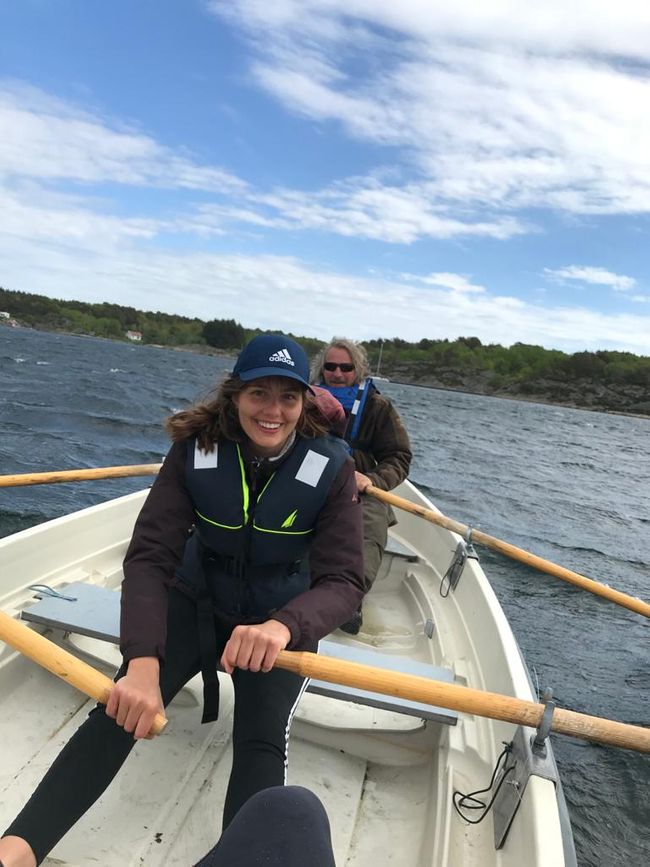
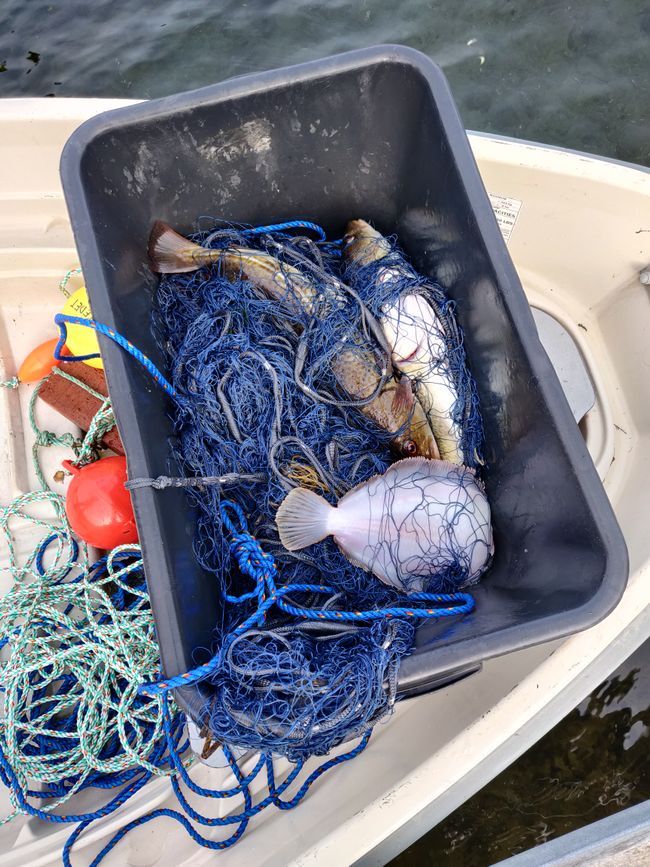
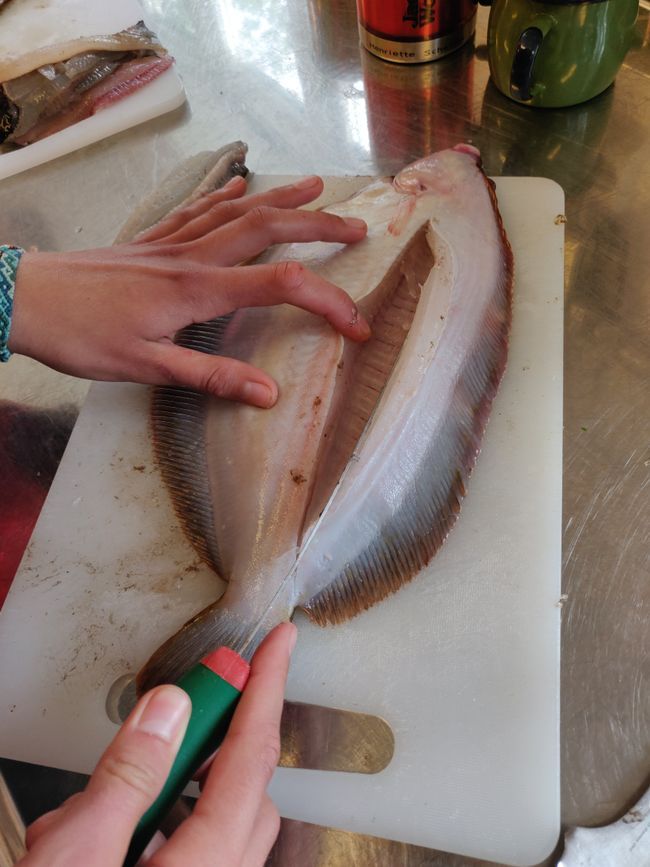
Wɔ Nudɔdɔ na Nyadzɔdzɔgbalẽ
Kayaking to the island Randøya, kayaking on open sea and a historical tour of the island
It is Monday, May 31st, and we embark on our final university trip. Unfortunately, the Covid regulations changed over the weekend before the trip, so we cannot spend the last trip from Monday to Friday on Randøya with the Norwegian outdoor education students as planned. Instead, we will be on the island from Monday to Wednesday, and the Norwegian students will be there from Wednesday to Friday.
At 9 am, we meet with our luggage in front of the main university building, where the bus picks us up. The bus takes us to Kongshavn, which is only 15 minutes away, where we load all our luggage onto a larger motorboat. Since our kayaks also need to be brought to the island somehow, I prepare for kayaking. Me and 14 others from the course paddle to the island with the kayaks, while the others are brought to the island by motorboat. It's the first time we paddle on the sea instead of a river. We paddle for about 30 minutes to a small beach on East Randøya, where our camp is located. The others who took the motorboat are already waiting for us and help us carry the kayaks ashore. We walk to the accommodation, which is only about 100 meters from the beach, and all have lunch together. At 2 pm, our program starts. We have four different sessions during these days, each accompanied by a different professor from the University: kayaking, motorboating, biology, and rowboating including fishing. Today, it's my turn for kayaking in the afternoon. First, Thomas pays attention to our paddling techniques and makes some small improvements here and there. After some paddling exercises between the islands in the shallow water, we paddle out to the open sea. It is no longer calm and still, but very windy and with quite some waves. We paddle around the island group for a while and then paddle back into the waters between the islands, as paddling on the open sea against the wind and waves is quite exhausting. Nevertheless, it's cool to experience kayaking under such conditions. We slowly paddle back to our dock. But before the kayaking session ends, we have to go through the capsize training again. In the last capsize training with Len, we were allowed to climb onto the dock immediately after capsizing, and he held onto our kayak and pulled it out. But this time, we have to capsize further away from the dock and drain and turn the boats ourselves on the water. We form teams of two. I capsize first, and Leo performs the rescue exercise. The water is only 8°C, and despite wearing relatively thin and short-sleeved wetsuits, it is more bearable in the water than expected. After crawling back into my kayak, it's Leo's turn to capsize. Now I pull her kayak onto my deck to let the water run out and turn it back. Unfortunately, I lose my balance and capsize as well. It takes a few minutes for one of the other teams to reach us and turn our two kayaks around, and by the end, I can no longer feel one of my fingers. After that, I try the rescue exercise again, and this time it works. This concludes the kayaking session.
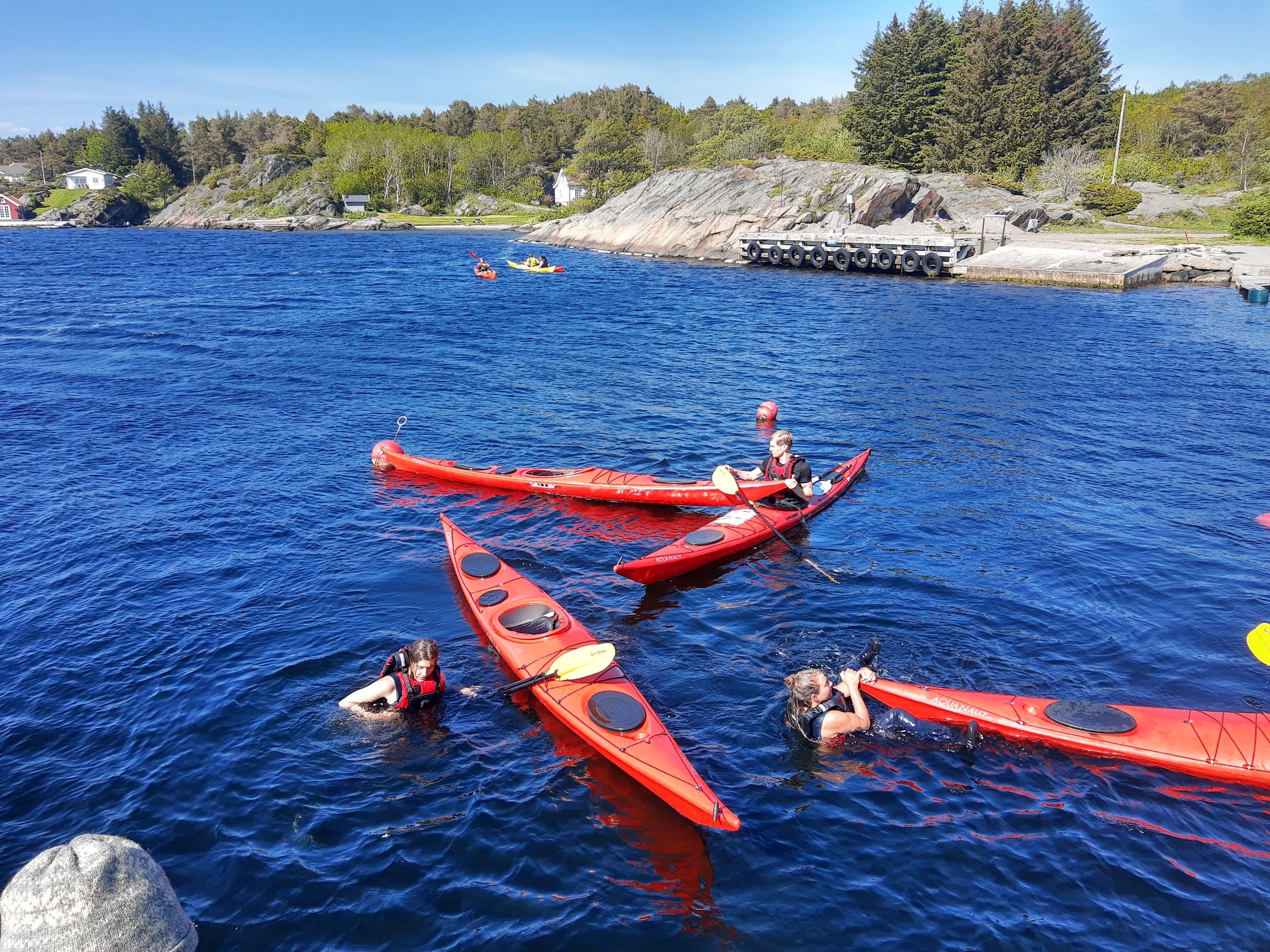
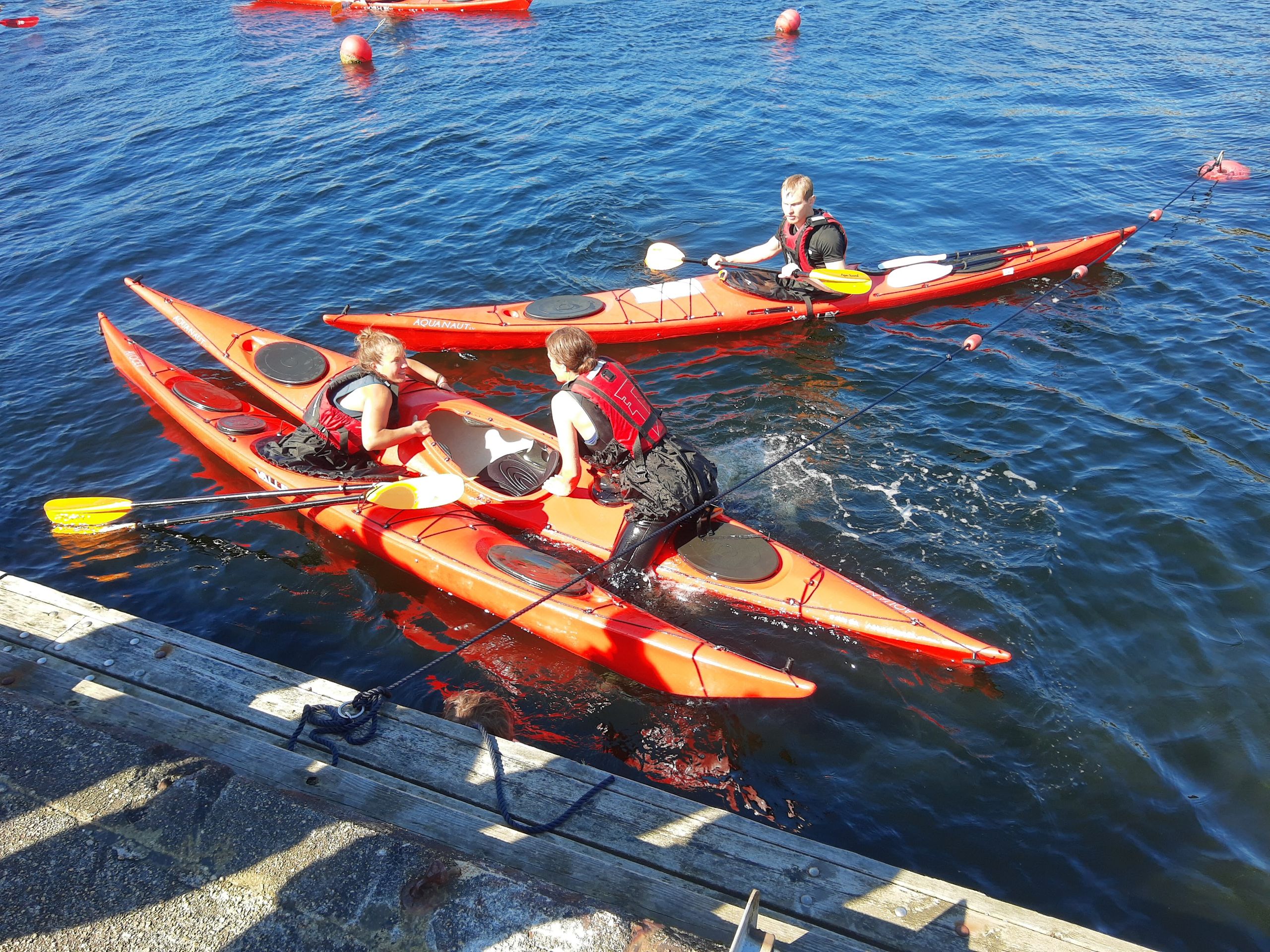
After dinner, we take a historical tour of the island with one of the four lecturers, Kjetil. Randøya was temporarily occupied by the Germans during the Second World War, and you can still discover some buildings on the island that served as defensive points for the Germans. Later, during the Cold War, the Norwegians built an underground command center on the island. We even get to visit this fascinating tunnel system with its different rooms.
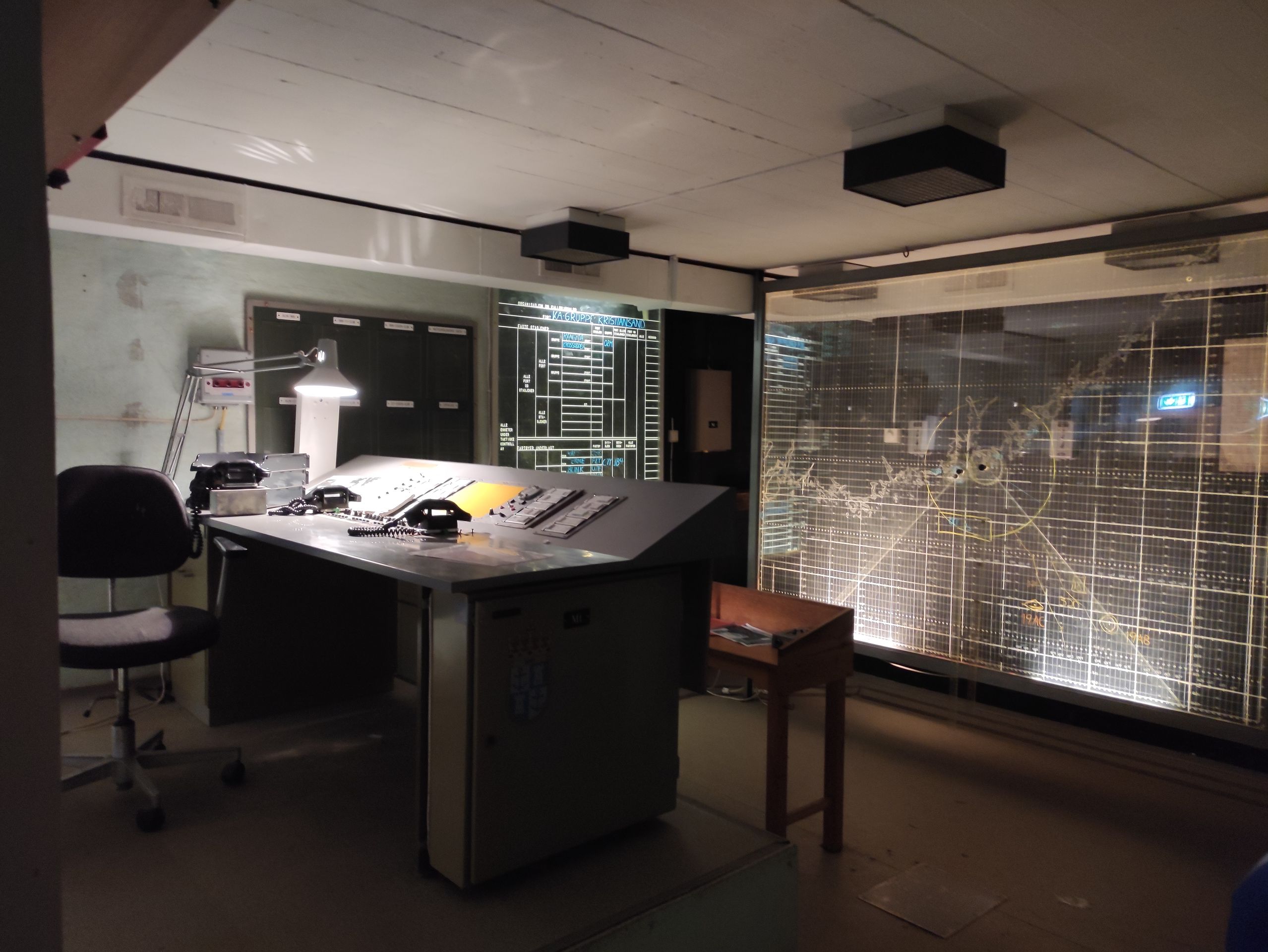
When we arrive back at the accommodation, we notice that we all have an incredible number of ticks. Some of us have counted over 20 ticks on our legs!
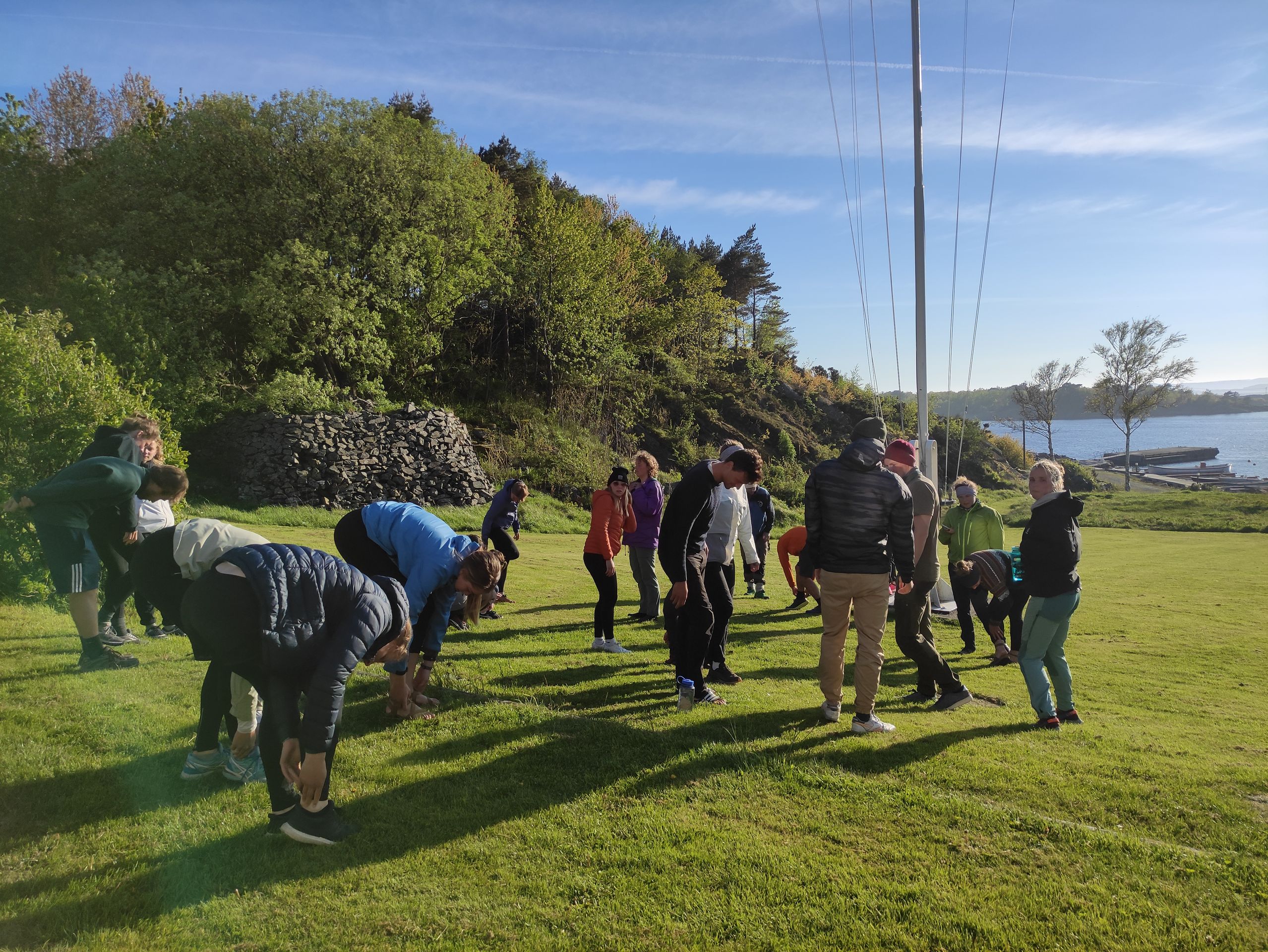
Kjetil tells us that there is no wildlife on the island due to the large number of ticks. Checking for ticks several times a day is a must here!
After the historical tour of the island, I find myself a sleeping spot. Theoretically, we could sleep in the old soldier barracks, but staying outside is naturally nicer. I find suitable trees to hang up my hammock, so I decide to sleep in the hammock instead of on the ground.
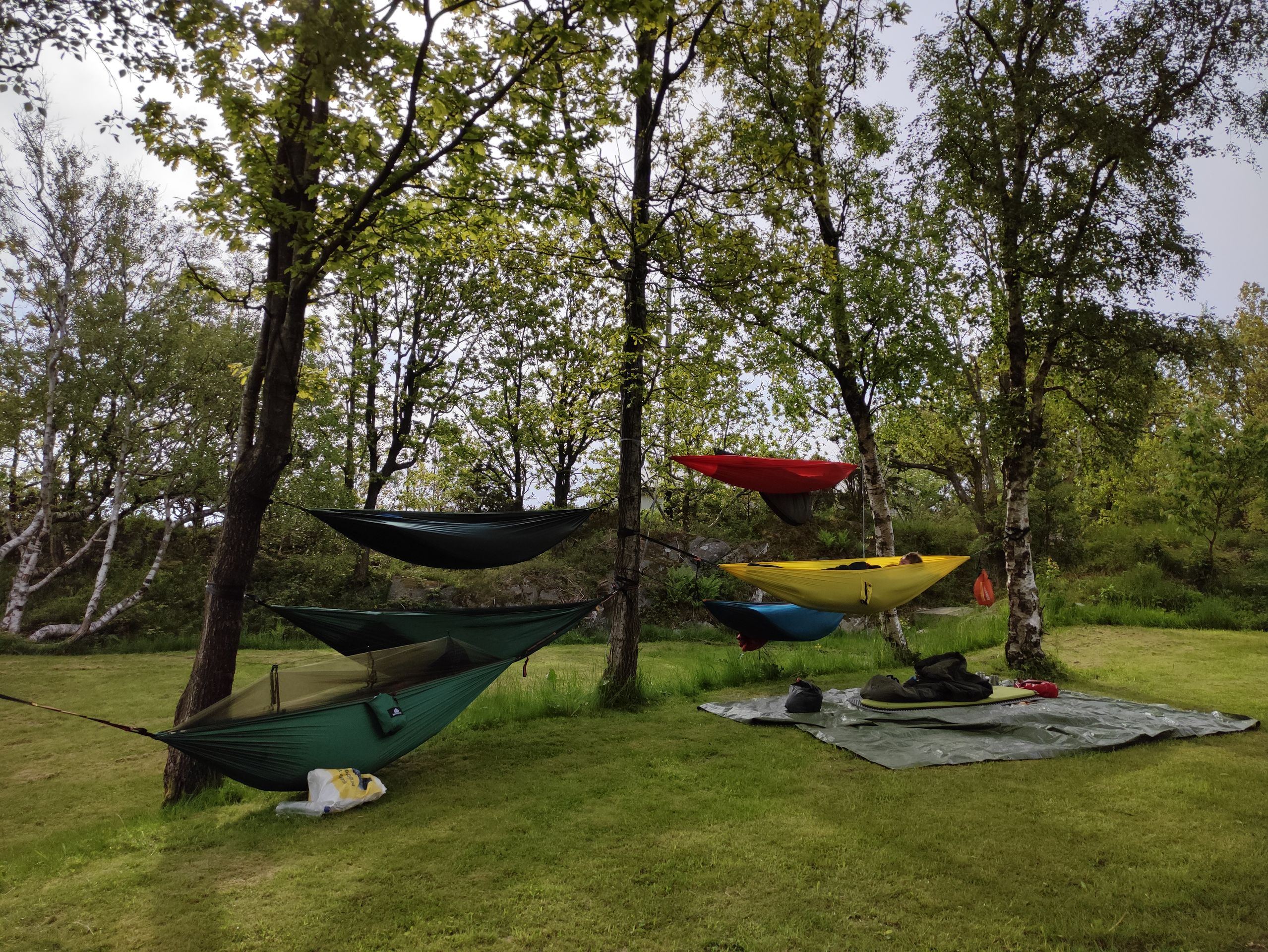
It's my first night in a hammock. Surprisingly, I really like it, even though I wake up occasionally to turn around.
Motorboating and Biology Session
The next day, Tuesday, June 1st, motorboating is on the agenda for the morning session. First, we talk to Kjetil about the various symbols on a nautical chart and what they mean. Then he briefly explains how to start the motorboats and sends us off. I am a bit overwhelmed and afraid that I might crash the boat somewhere and break something. But fortunately, I'm riding in a motorboat with Willemijne, and since she is a sailor, she knows her way around motorboats. She explains everything to me again calmly. I actually enjoy motorboating! We spend some time cruising in the waters between the islands and practice steering and docking at the dock. With time, I get a better feel for the boat.
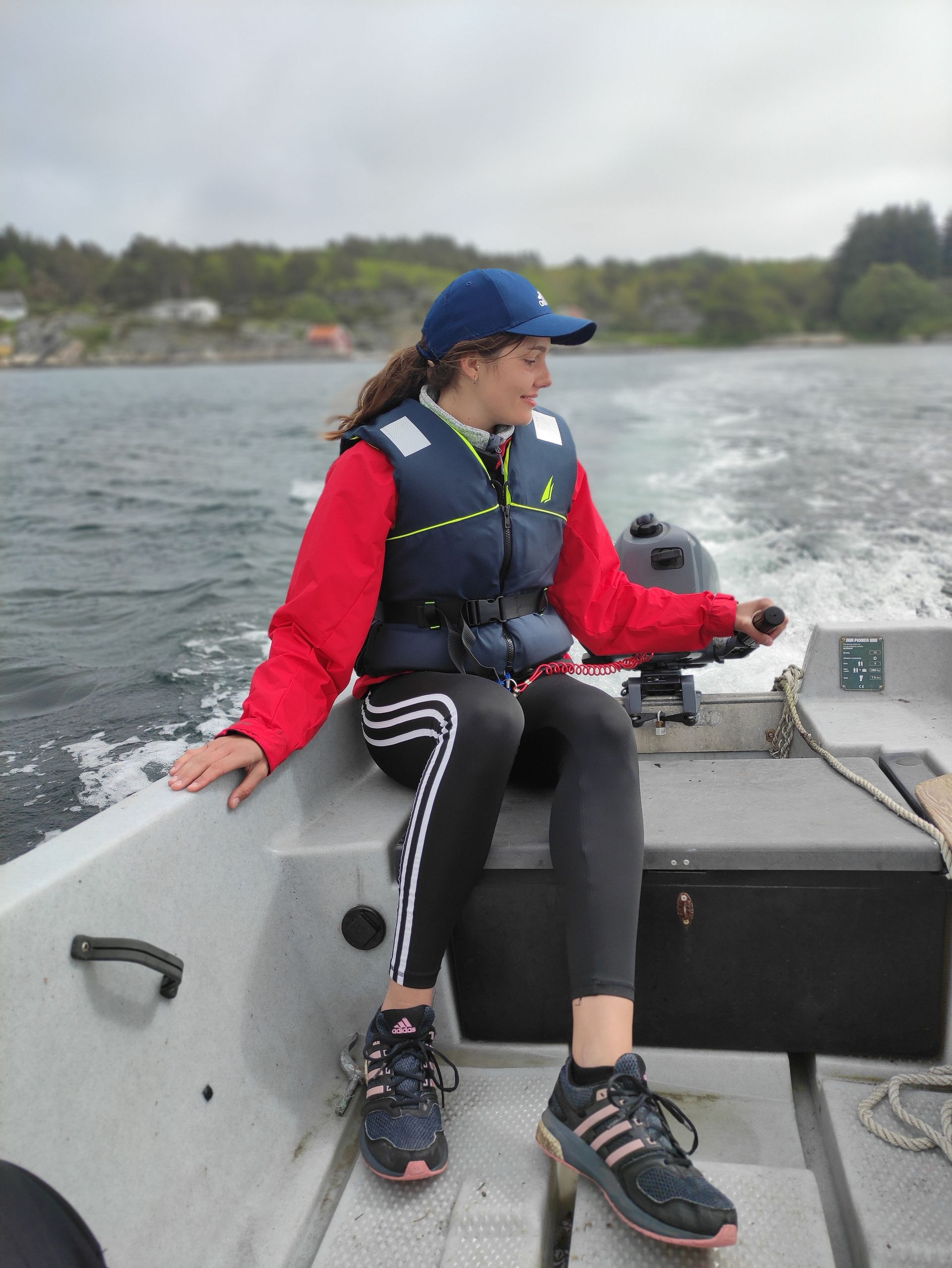
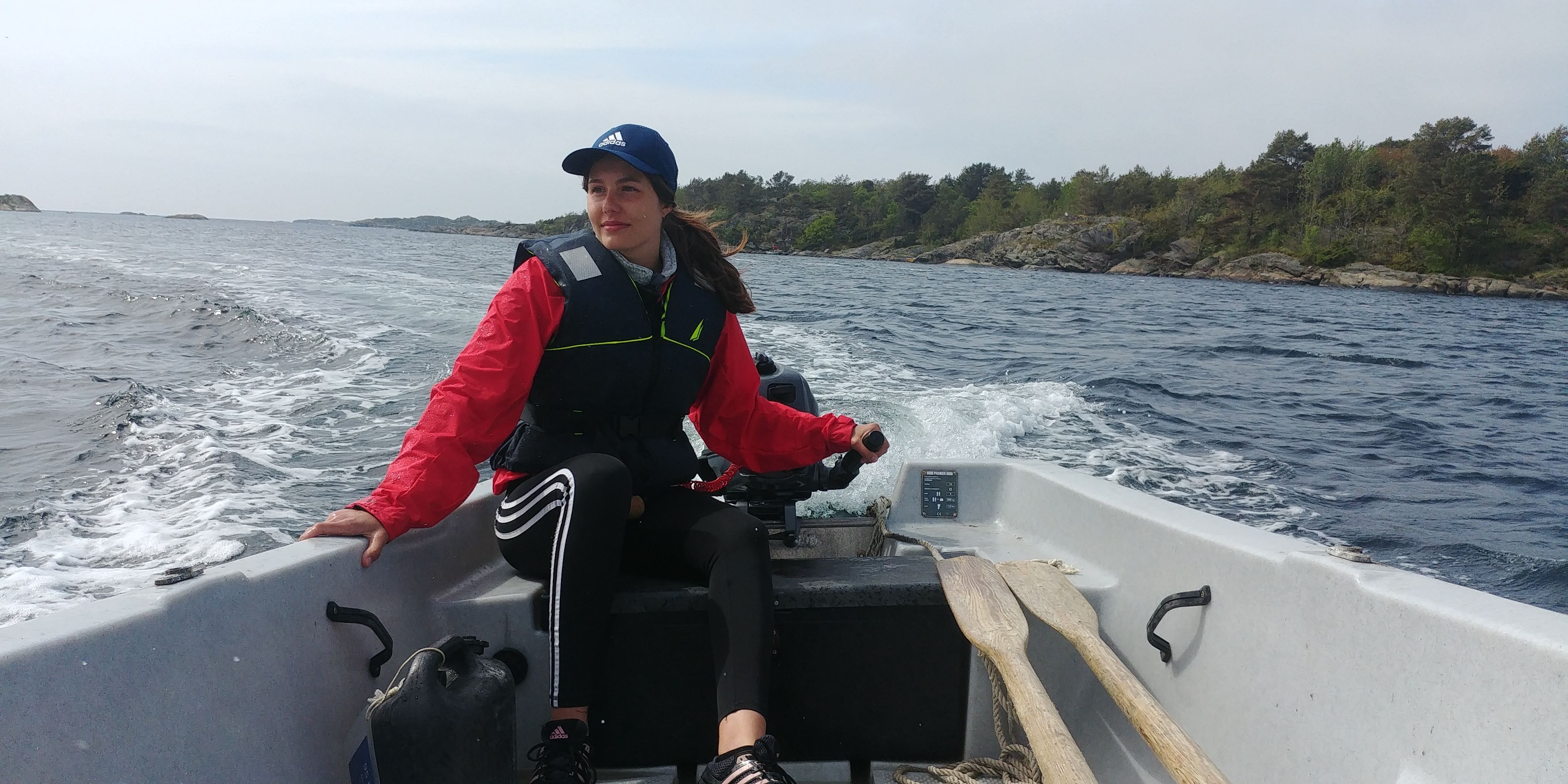
Unfortunately, after some time, the engines of all three boats start to complain and fail. Kjetil explains to us that the motorboats have been through a lot and have reached the end of their life. A few times, we have to tow each other and pull the stuck boat away from the rocks, so it doesn't drift towards the rocky islands due to the current. We try to start the engine again while keeping a safe distance from the rocky islands. Towards the end of the session, two out of three boats don't respond at all. The remaining working motorboat tows the other two back to the dock, and we decide to call it a day. Nevertheless, motorboating was a cool experience!
In the afternoon, it's my group's turn for the biology session. Together with Svein, the biology professor, we walk to a beach with shallow water. We have nets, binoculars, plastic boxes, and much more with us. On the way to the beach, Svein hears the song of a willow warbler, the most common bird in Norway, so we briefly catch a glimpse of it. Once we arrive at the beach, Svein assigns us the task of searching for and collecting organisms in the water.
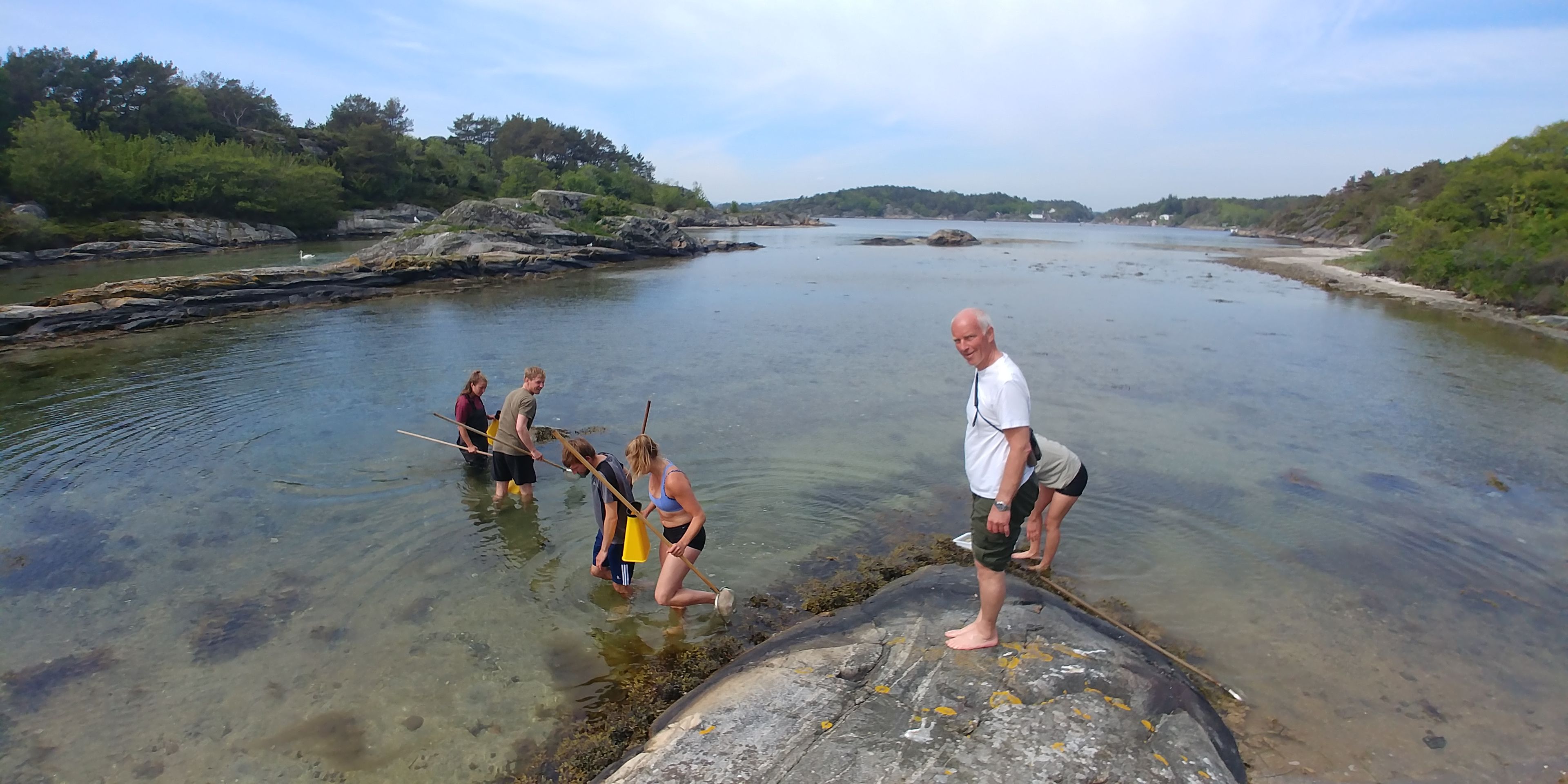
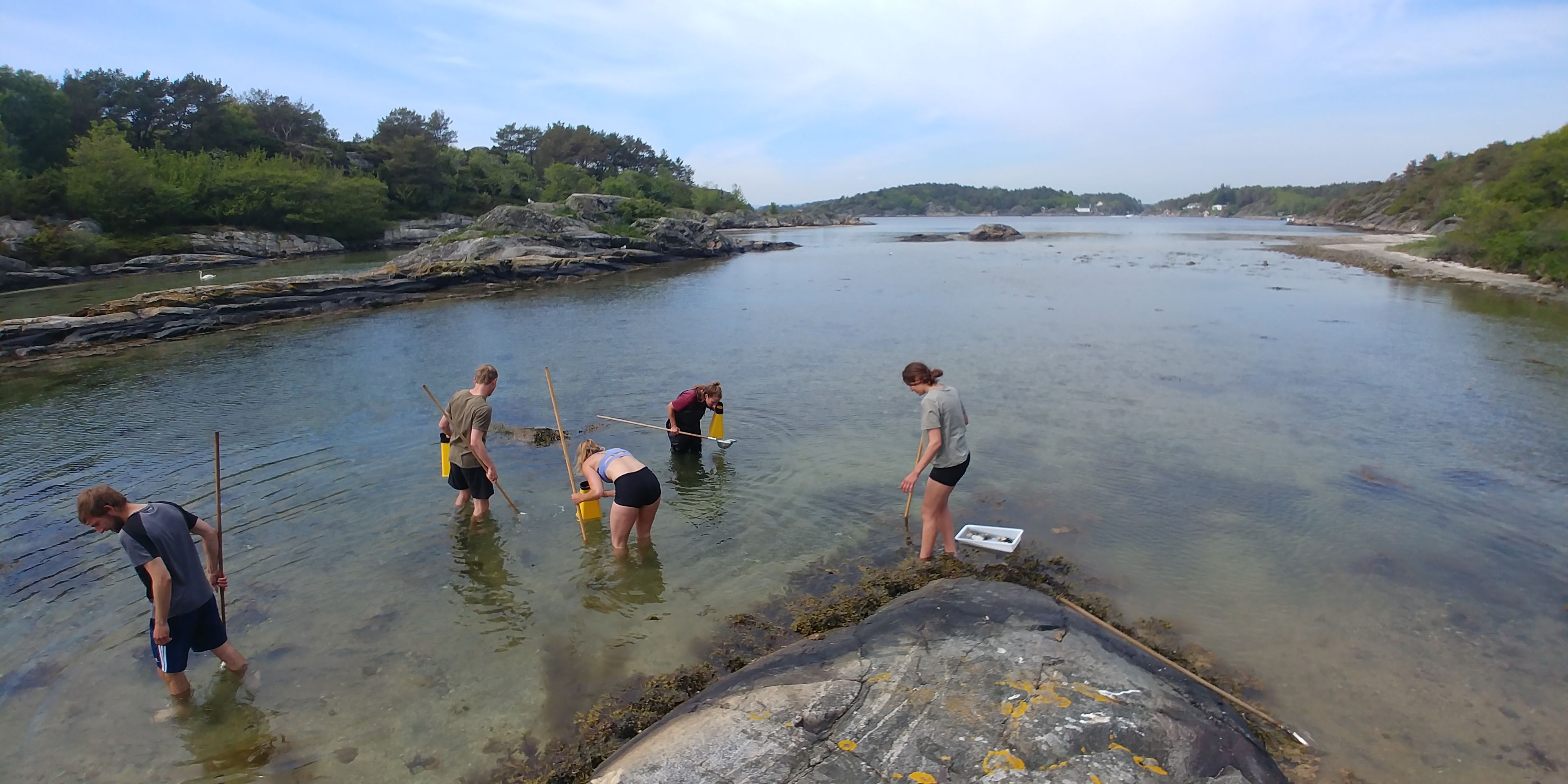
Afterwards, we sit together and examine our findings. Since Svein asked about our fields of study at the beginning of the session and we later talked about my internship at the North Sea during my voluntary ecological year (FÖJ), he wants me to tell the others about the mussels, snails, crabs, etc. Svein only helps me sometimes with translating the species names into English.
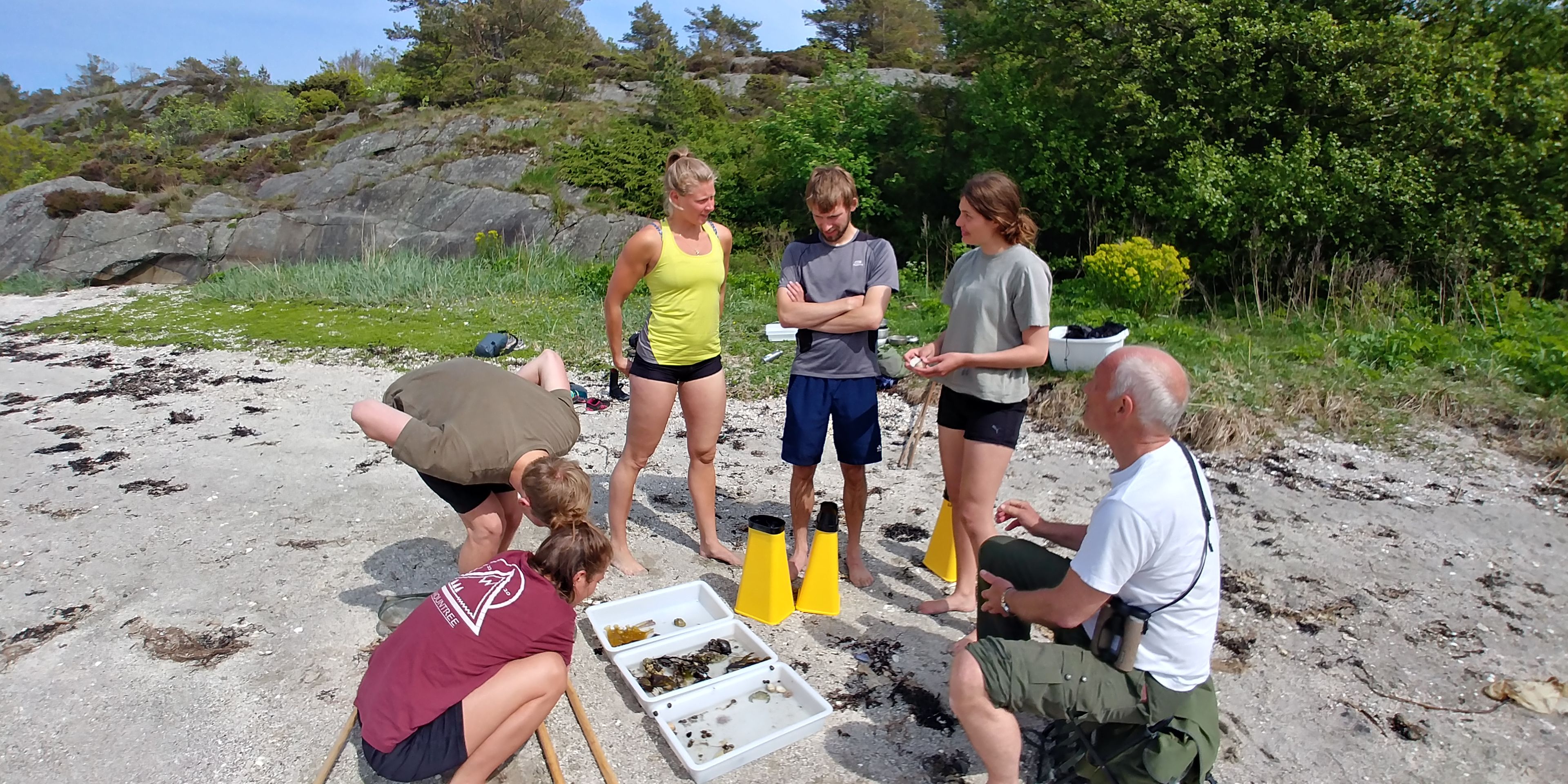
Afterwards, Svein takes out his camping stove and cooks some of the mussels and snails. Even though I hadn't planned on trying mussels and snails at some point, I give them a try. I try a cockle, a mussel, an oyster, and a snail. Although the mussel and the oyster actually tasted quite okay, I know that I don't need to have them again. After sampling the seafood, we walk to the tip of the island.
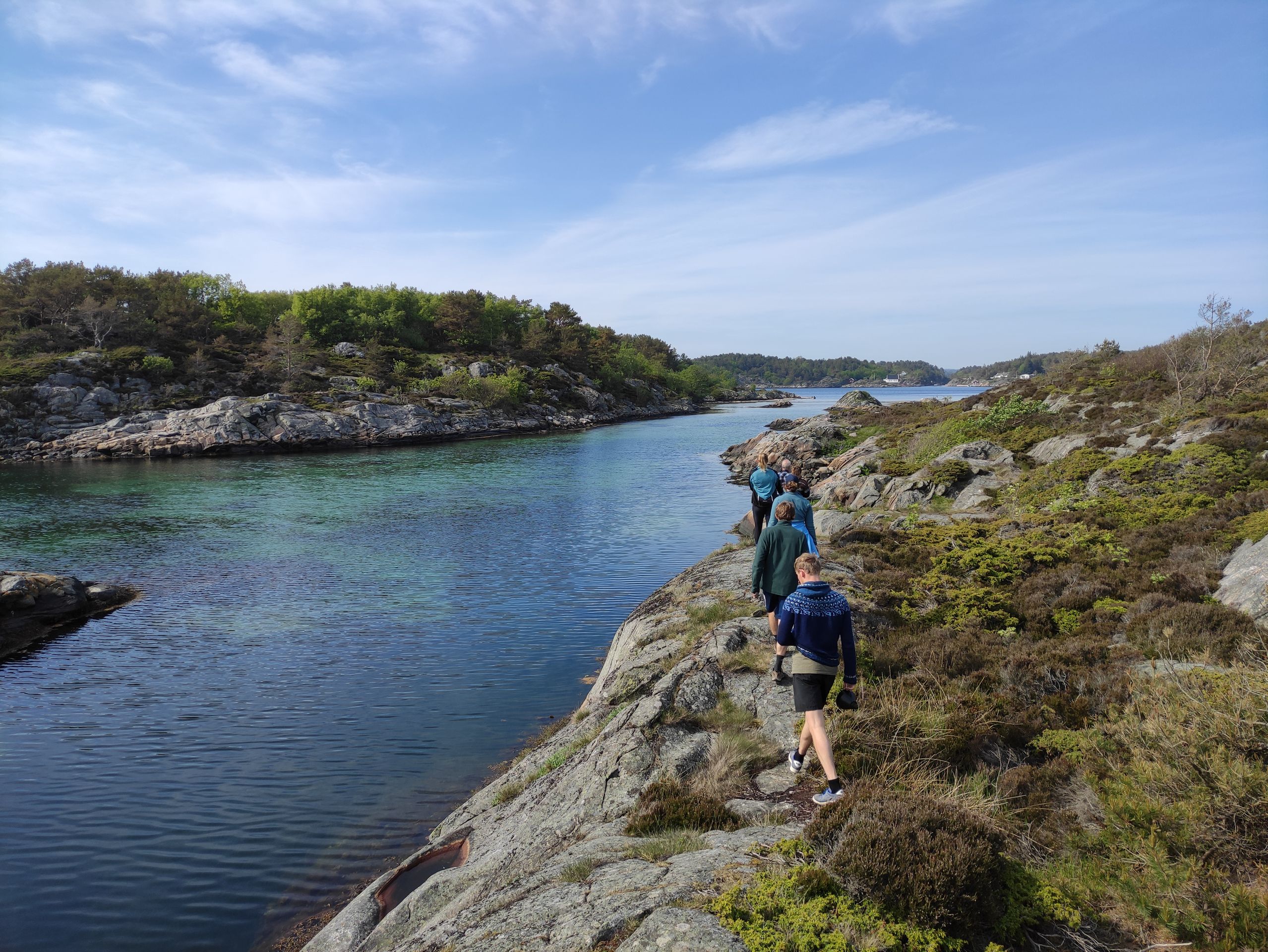
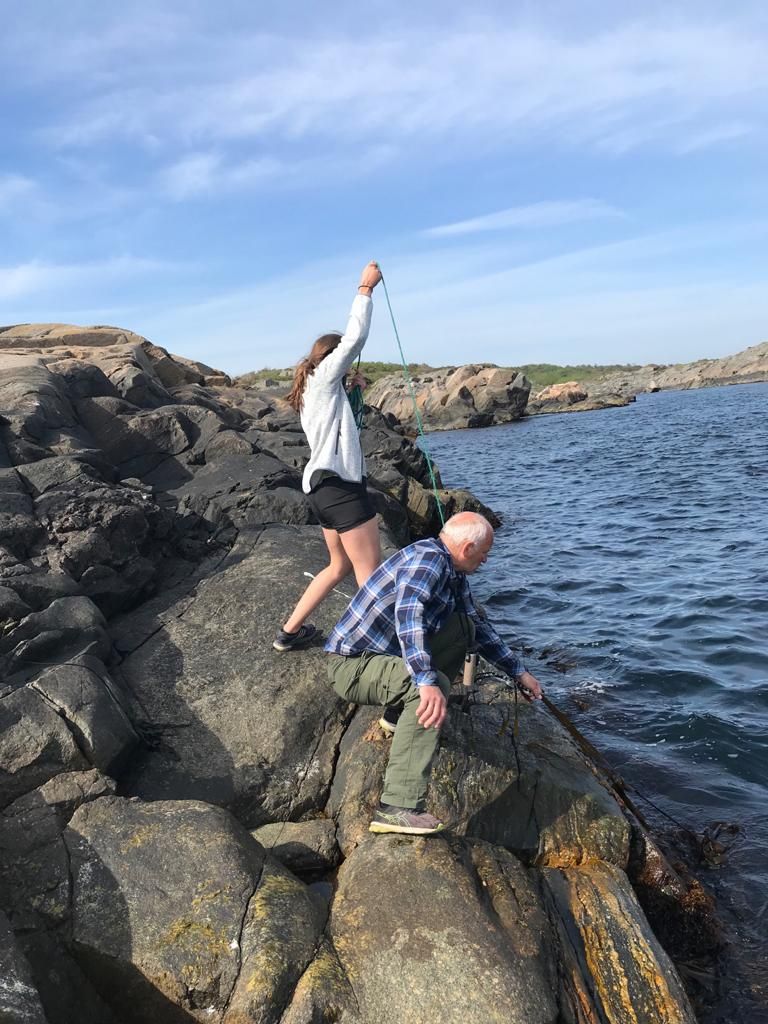
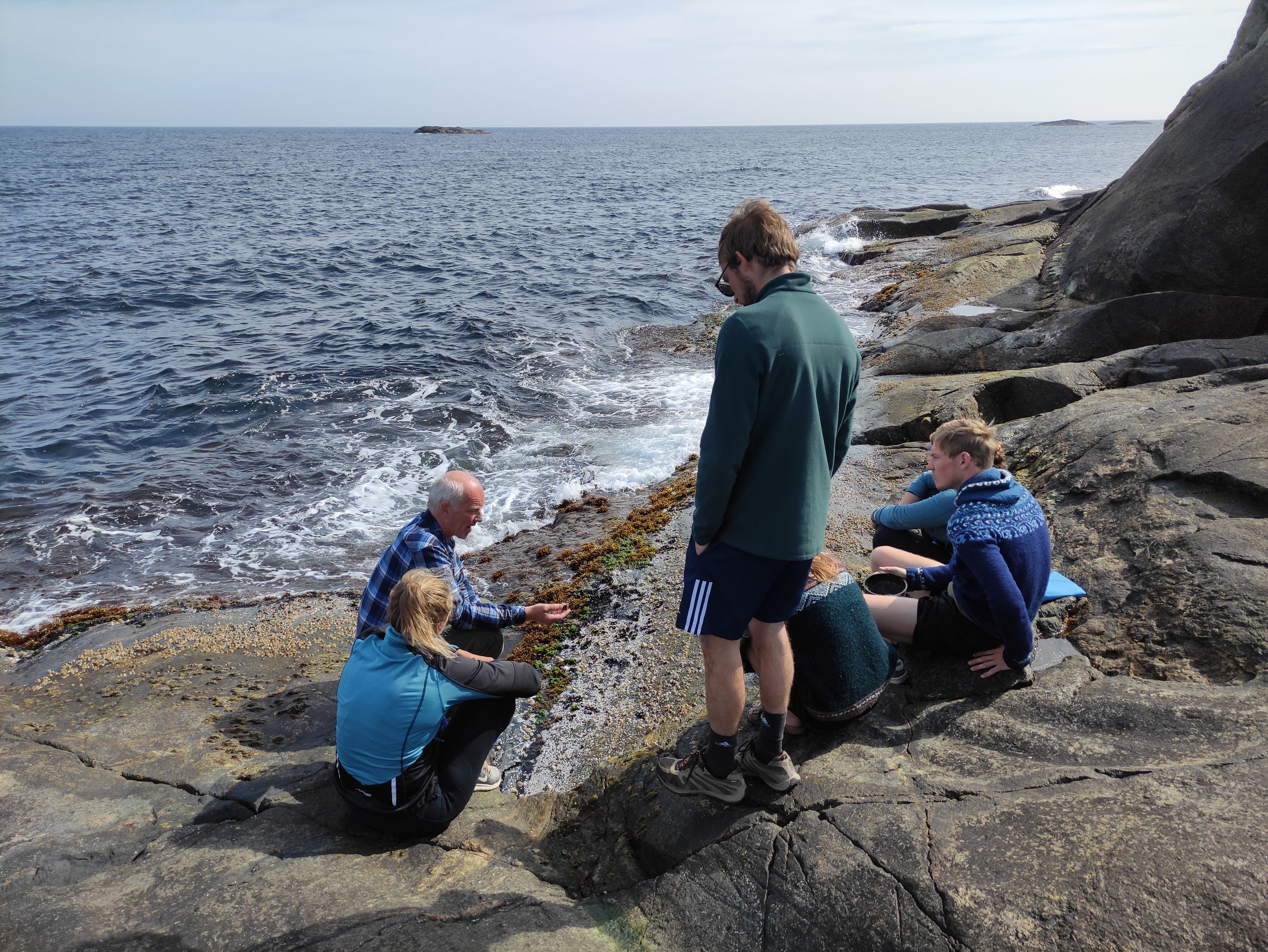
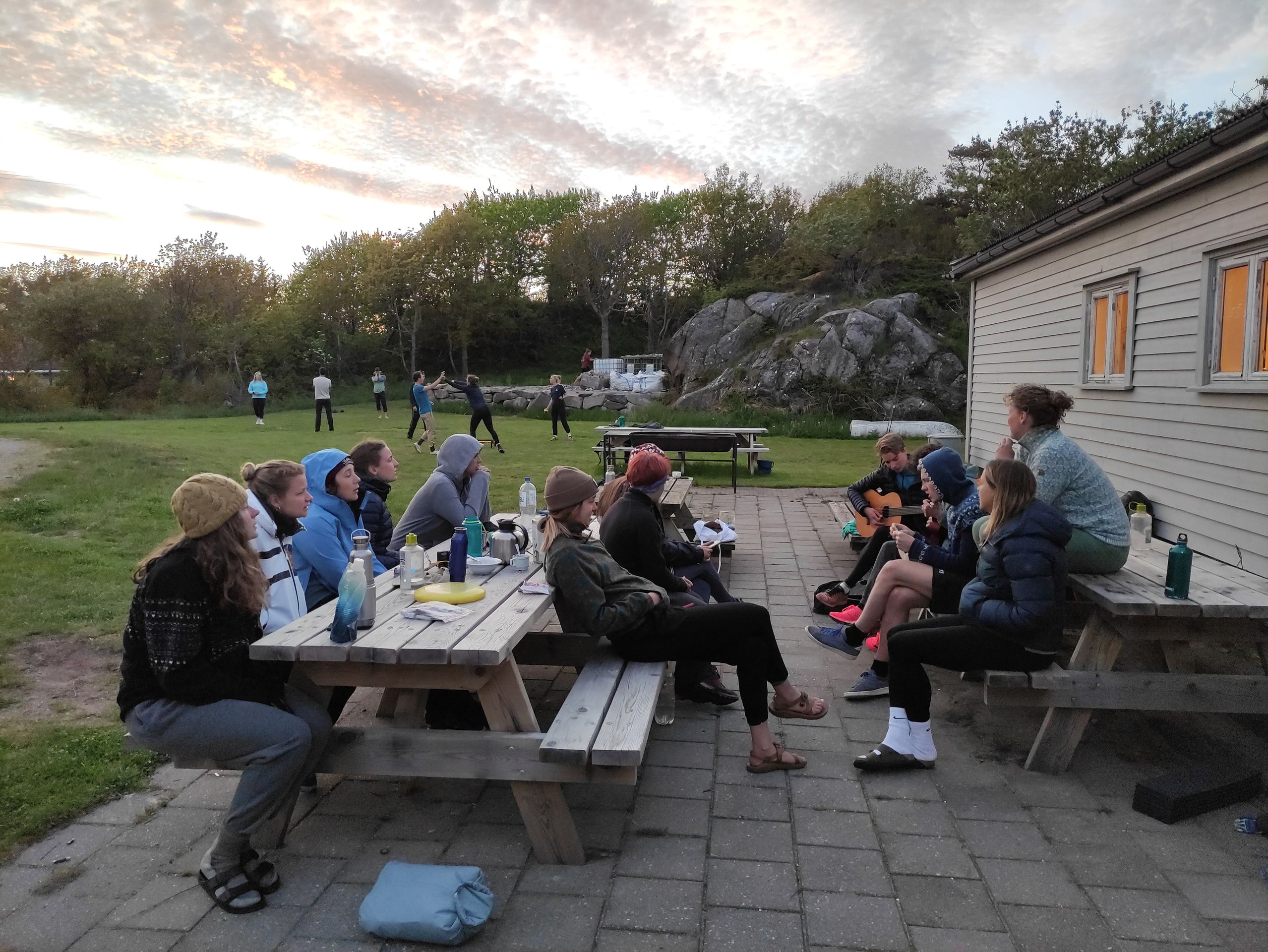
On the last day on Randøya, it's my group's turn for rowboating and fishing. We meet Petter at the rowboats, and he first explains to us how to handle the fishing rod. He doesn't explain anything about rowing the boat itself because he wants us to learn through our actions. We row in teams of two. Actually, Laura and I manage the propulsion and steering relatively well, but it still feels more difficult than it looks. We row out into the waters between the islands for a while and then start fishing. It actually takes less than a minute for Laura's and my fishing lines to start vibrating. We have actually caught a cod!
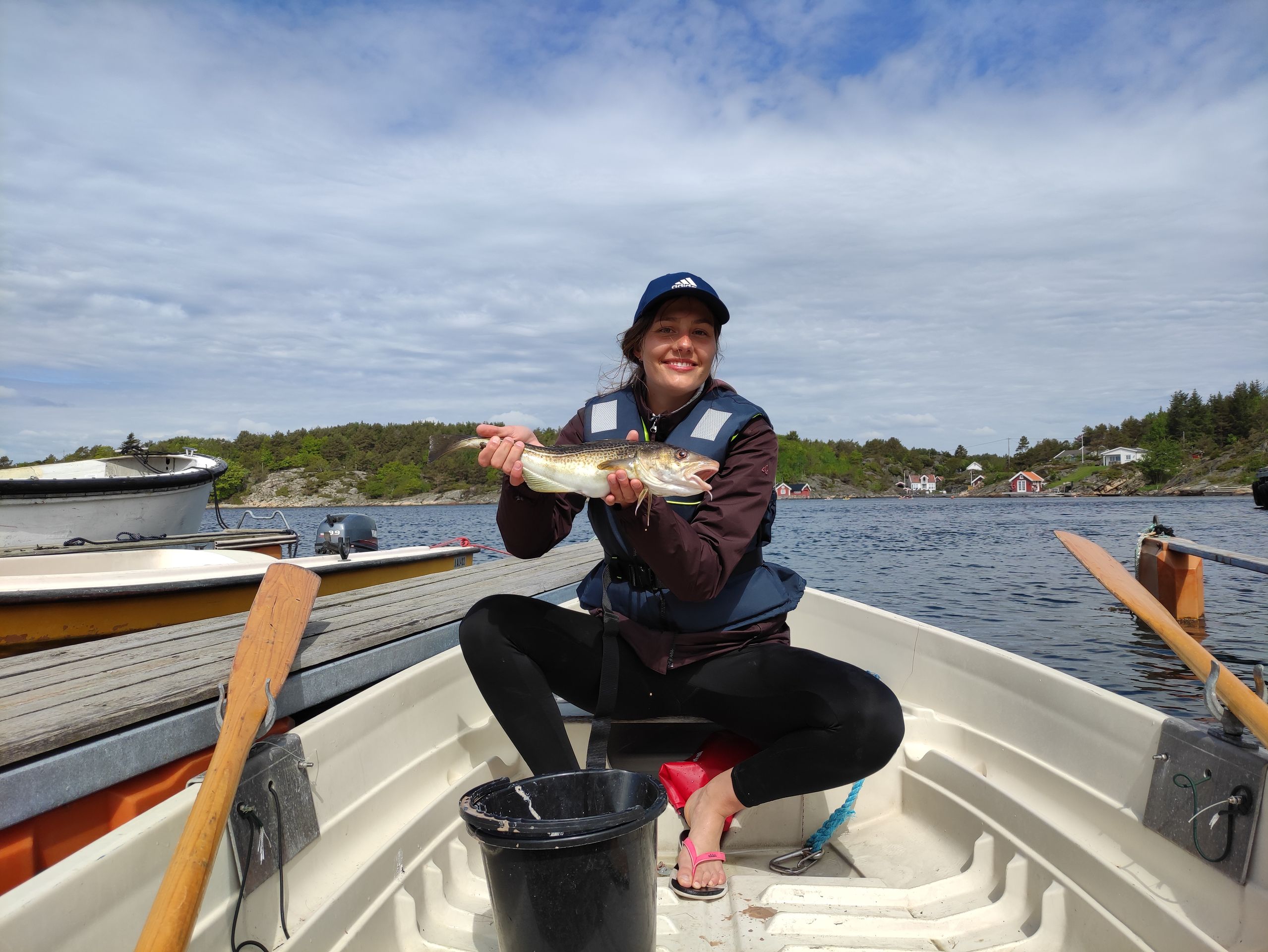
Because the fish attracts all our excitement and attention, we don't notice that the current is carrying us out of the islands and towards the open sea. We quickly start rowing, but we still drift further out. I quickly realize that we won't be able to row against the current, and for a brief moment, panic sets in. Since the wind and current are pushing us towards a rocky island, Laura and I hold onto the rocks to prevent us from drifting further out. We raise our hand and call for help. After a few minutes, Petter comes to our aid and takes over Laura's rowing oar. Then Petter and I row back to our dock.
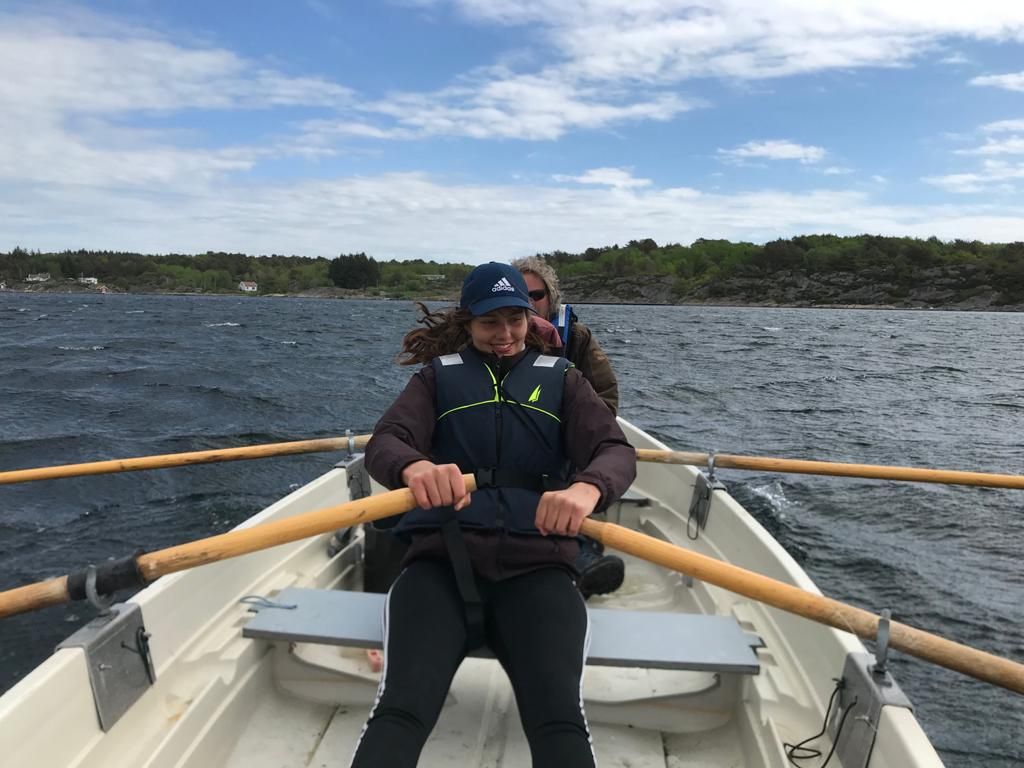
We underestimated the wind today. Back on land, Petter briefly explains how to prepare the fish, and we discuss how we didn't assess the wind correctly and what safety precautions we would have to take if we were maybe leading groups ourselves in the future.
After this final session, we quickly change and retrieve our backpacks, which we packed in the morning. Since the large motorboat that brought us and our luggage to the island, in addition to the three small motorboats, no longer starts, we have to walk to the north of the island, where a taxi boat picks us up. The taxi boat takes us to Kongshavn, where the bus that takes us back to campus is already waiting.
This diverse island trip is definitely one of my favorite trips, along with the big ski trip and the Preikestolen/Stavanger/Brufjellhålene trip!
It is June 2nd when we return from the Randøya trip. The oral practical exam is on June 10th, and then my semester abroad is officially over.
You will learn about the last two weeks on campus in my next blog post!
Until then, Sara
Wɔ Nudɔdɔ na Nyadzɔdzɔgbalẽ
Ŋuɖoɖo
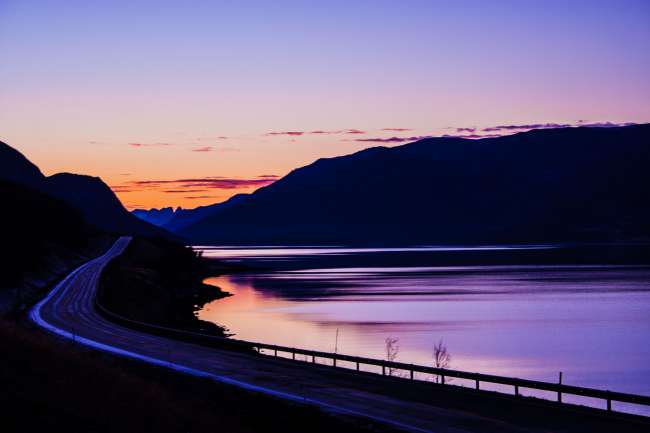
Mɔzɔzɔ ŋuti nyatakakawo Norway
